- 2.0 Litre Hybrid drivetrain is both efficient and nippy
- Practical interior with spacious rear seat and boot
- Good allrounder
- Missing some key equipment
- Tiny fuel tank
- Interior not overly special
Post the death of the large family sedan at the hands of the SUVs, small hatches and sedans such as the Toyota Corolla, Mazda3 and Hyundai i30 reigned supreme on Australian sales charts, however small and medium sized SUVs have come after these cars which were best sellers only a few years ago. Sales of the Mazda 3 and i30 have plummeted in recent years and Corolla sales, while still respectable are definitely on the decline. As a result it’s become a case of ‘adapt, or perish’, and thus the Corolla Cross has been born – a crossover SUV version of the Corolla to ensure Toyota’s longstanding nameplate adapts and stays alive. Enter the 2023 Toyota Corolla Cross GX Hybrid.
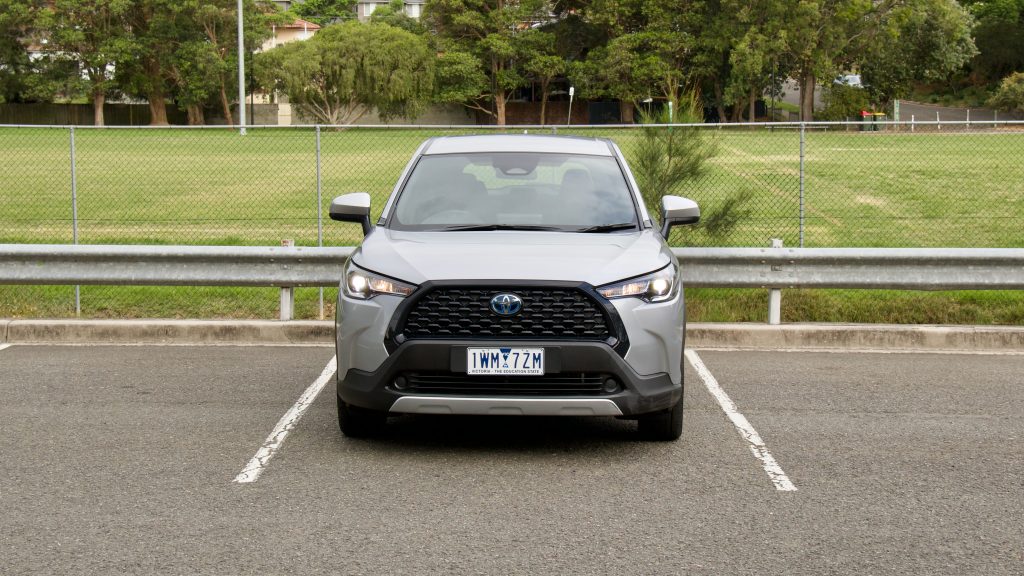
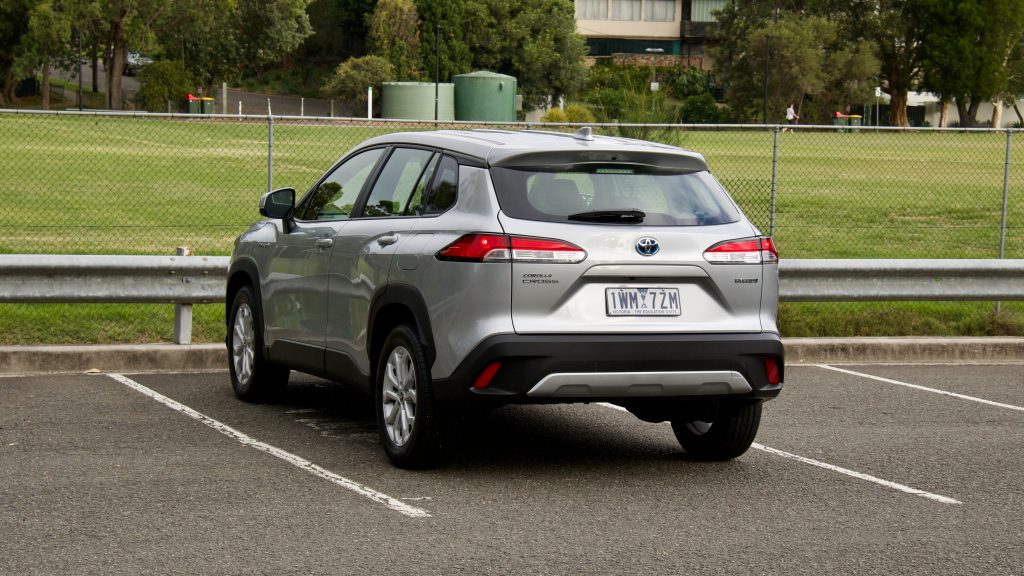
Some might have suggested that Toyota already has enough SUVs, with the Yaris Cross, C-HR, RAV4, Kluger, Fortuner, Prado and LandCruiser covering plenty of sizes, but the C-HR, which is closest in size to the new Corolla Cross turns plenty of buyers off with its more daring design, which in a very un-Toyota-like way, prioritises design and style over function. Some would say the same of the Corolla hatchback – a revolution in terms of style and drivability for the Corolla nameplate, but a revolution came with the loss of boot and backseat space. In the absence of the Corolla wagon being sold in Australia, enter the Corolla Cross, to offer a more practical small SUV option to the C-HR, a Corolla with more usable boot and rear seat and also to appease the Australian appetite for SUVs in filing the size gap between the C-HR and the widely popular RAV4.
Is the Corolla Cross the small SUV most deserving of your money? Will it continue the legacy of the Corolla? Or is it just another SUV in an already crowded market? Read on to find out our thoughts after a week behind the wheel of a the base hybrid Corolla Cross.
Price & Equipment: 7.5/10
The 2023 Corolla Cross range kicks off at $33,000, or around $36,800 drive away, depending on location for the base petrol GX mode and tops out with the Atmos AWD Hybrid with a retail price of $49,050 or about $53,700 drive away. As the cheapest petrol electric variant, our test vehicle, a Corolla Cross GX Hybrid 2WD with premium paint is priced at $36,075, or about $40,000 drive away.
For the price, standard equipment includes 17-inch alloy wheels, automatic LED headlights with halogen daytime running lights, heated and auto-folding mirrors, a 7.0-inch digital instrument cluster, keyless entry and start, single-zone climate control, fabric upholstery, electric lumbar adjustment for the driver’s seat, an 8.0-inch touchscreen display with satellite navigation with live traffic, cloud-based updates, AM/FM/DAB radio, wireless Apple CarPlay, wired Android Auto, a six speaker sound system and Toyota connected services allowing remote monitoring and other remote functions through a smartphone app.
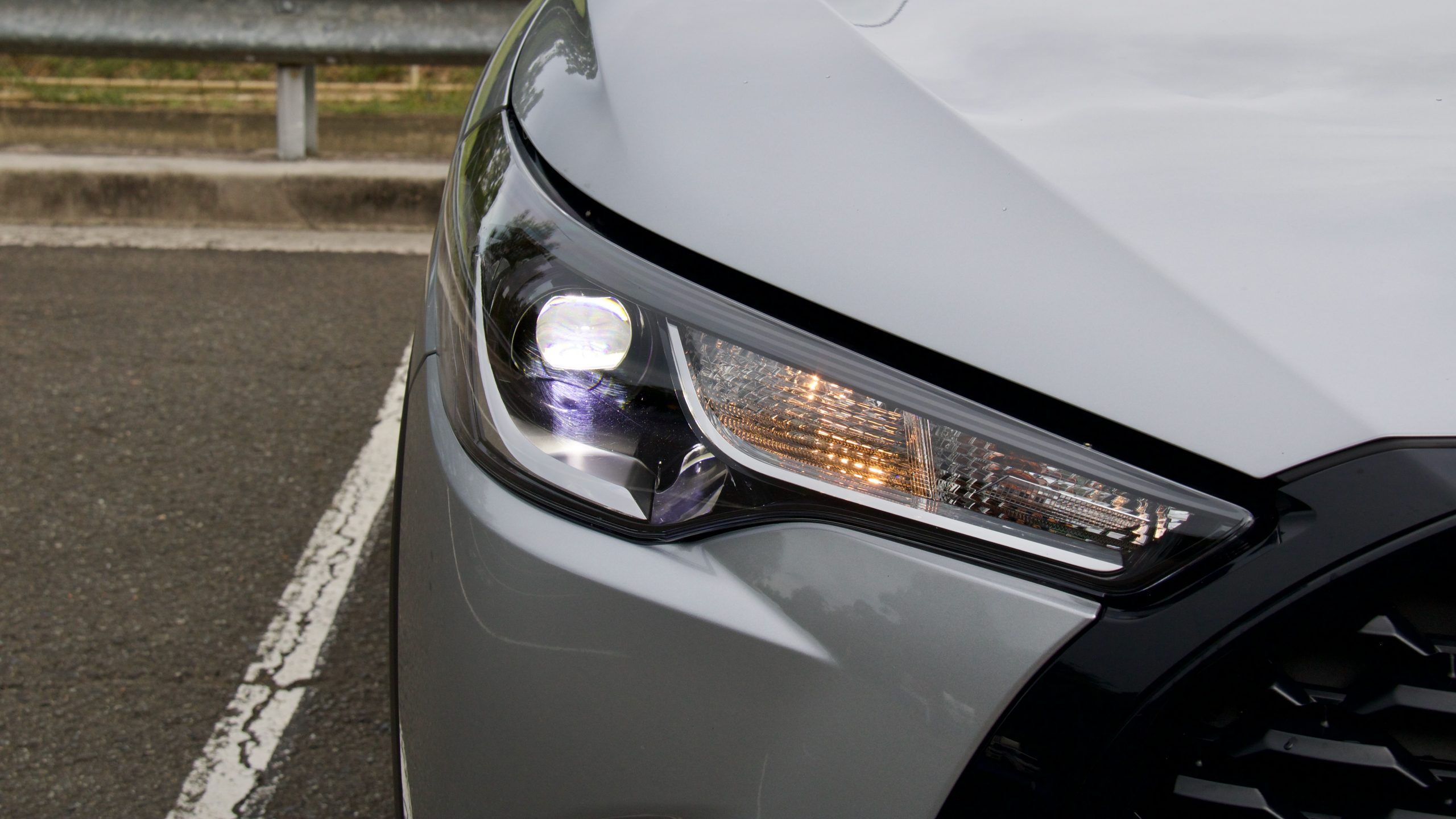
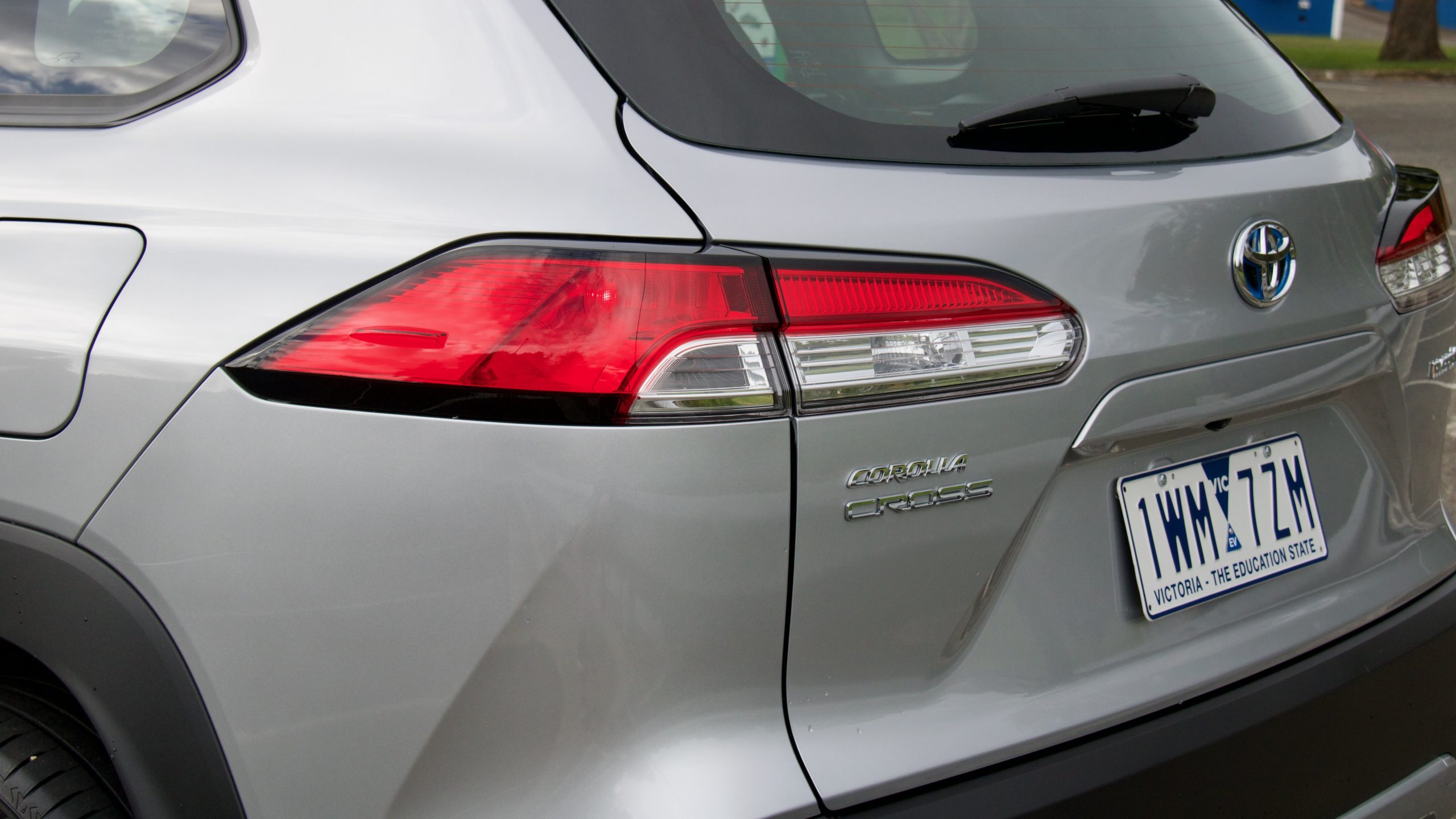
The Corolla Cross was awarded a five-star ANCAP rating in 2022, and is equipped with eight airbags (dual front, dual front side, front centre, driver’s knee and dual curtains), auto emergency braking (AEB) with pedestrian and cyclist detection, front cross traffic alert, adaptive cruise control with stop and go functionality, lane departure alert with steering assistance, lane change assistance, auto high beam, blind spot monitoring, rear-cross traffic alert, safe exit assist, speed sign recognition, an alarm, a reversing camera and Toyota Connected Services with an SOS button, collision notification and stolen vehicle tracking.
The sole option available on the Corolla Cross GX Hybrid is colour, with ‘Glacier White’ and ‘Jungle Khaki’ both as no-cost options and ‘Frosted White’, ‘Atomic Rush’, ‘Lunar Blue’, ‘Moondust Grey’ and our test car’s ‘Stunning Silver’ all a $575 additional cost.
The small SUV segment includes competitors such as the Kia Seltos, Kia Niro, Mazda CX-30, Nissan Qashqai, Mitsubishi ASX, Honda HRV, Volkswagen T-Rock, Skoda Kamiq, Suzuki Vitara and even Toyota’s own CH-R. We picked the Mazda CX-30 G20E Evolve and Kia Niro S Hybrid as the closest picks of the bunch to compared to the Corolla Cross we tested.
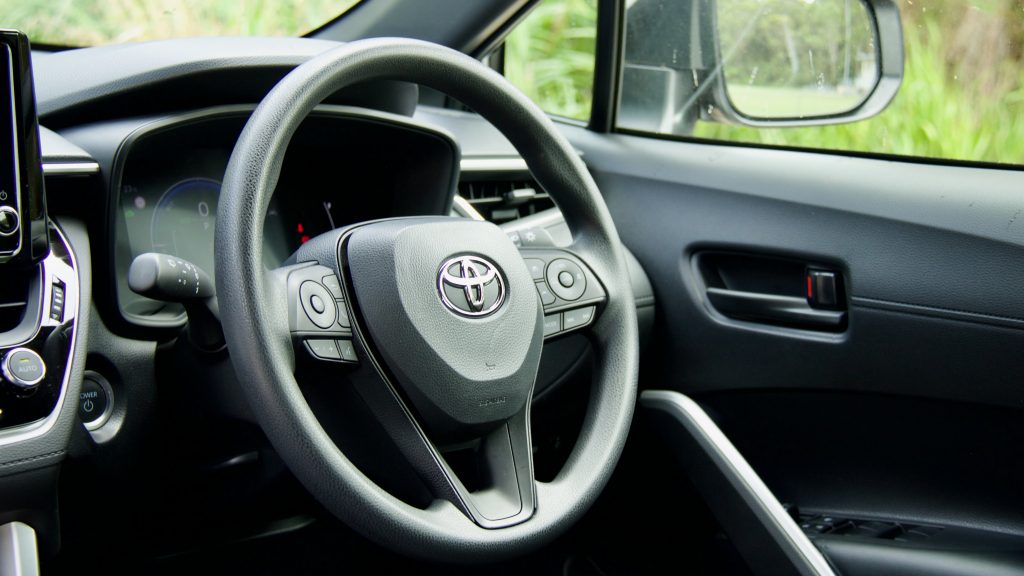
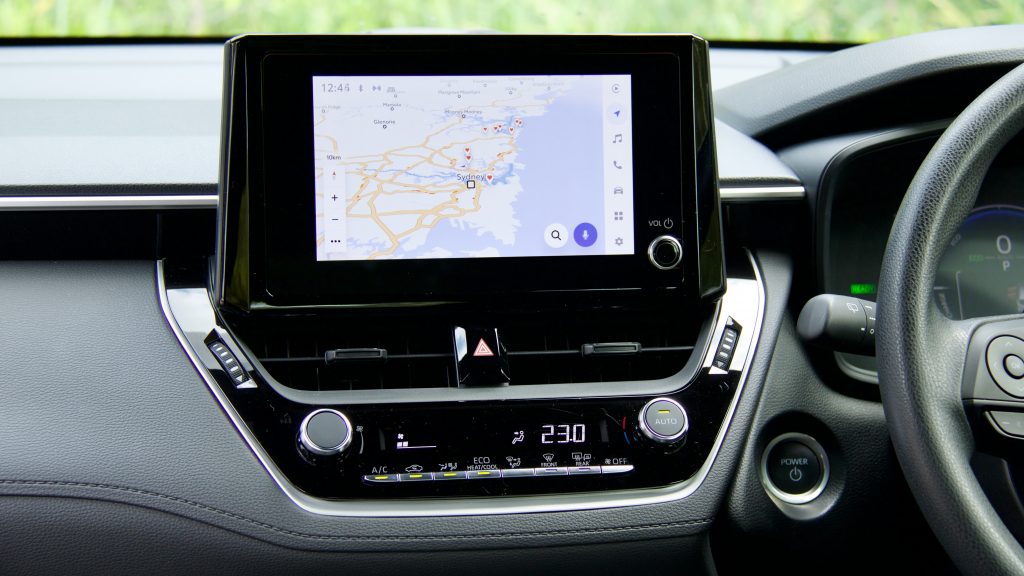
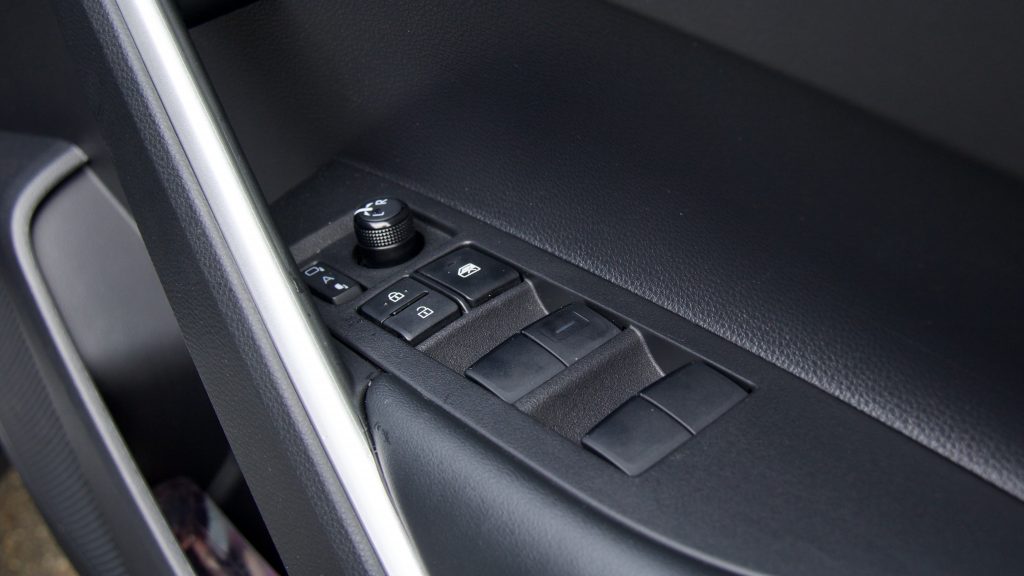
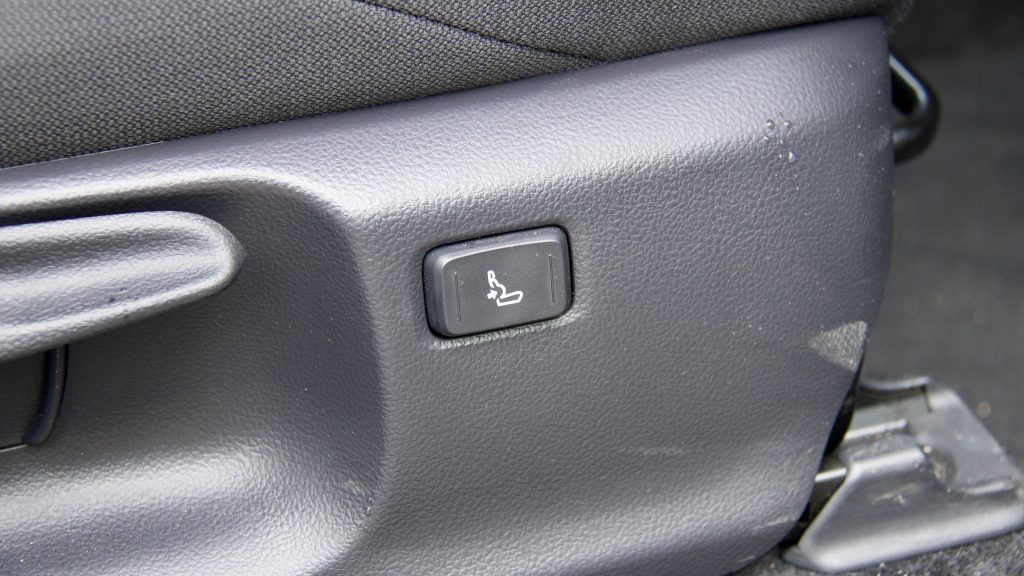
Priced at $36,660 or around $40,900 drive-away, the Mazda CX-30 G20E Evolve is decked out with a substantial amount of equipment which is missing on the Corolla Cross, including leather seats and steering wheel, an extra two speakers, a larger 8.8-inch infotainment system, larger 18-inch alloy wheels, driver attention monitoring, front and rear parking sensors, rear auto braking, braking for rear cross traffic alert, tyre pressure monitoring, rain-sensing wipers, 360 degree camera, dual-zone climate control, auto-dimming exterior mirrors, paddle shifters, power adjustment with an extra two ways of adjustment and two position memory for the driver’s seat. The Corolla Cross does have a full hybrid drivetrain, compared to the mild-hybrid system in the Mazda and benefits from heated exterior mirrors, wireless Apple CarPlay, both front centre and driver’s knee airbags, a burglar alarm, safe exist assist and connected services including remote functions, safety and security features enabled through an inbuilt SIM – all of which are missing on the Mazda.
The Kia Niro S Hybrid costs $44,380 +ORC or around $48,900 drive away, depending on location – compared to the CX-30, the Niro is a closer match to the Corolla Cross in terms of equipment, but also in also being a ‘proper’ hybrid. The Niro S Hybrid bests the Corolla Cross GX Hybrid with two extra USB charging ports, wireless Android Auto, dual-zone climate control, multi-collision braking, collision advance for both the blind spot and rear cross traffic alert systems, rear parking sensors, driver attention monitoring, an auto-dimming rear-view mirror, power adjustment for the driver’s seat and LED DRLs. The Corolla claws back with LED headlights, auto-folding mirrors, a driver’s knee airbag, a larger 7.0-inch digital instrument cluster, an inbuilt SIM card enabling Toyota connected services allowing remote monitoring, remote start and remote security features through an app, larger 17-inch alloys, automatic up/down windows for all doors and push button start and keyless entry.
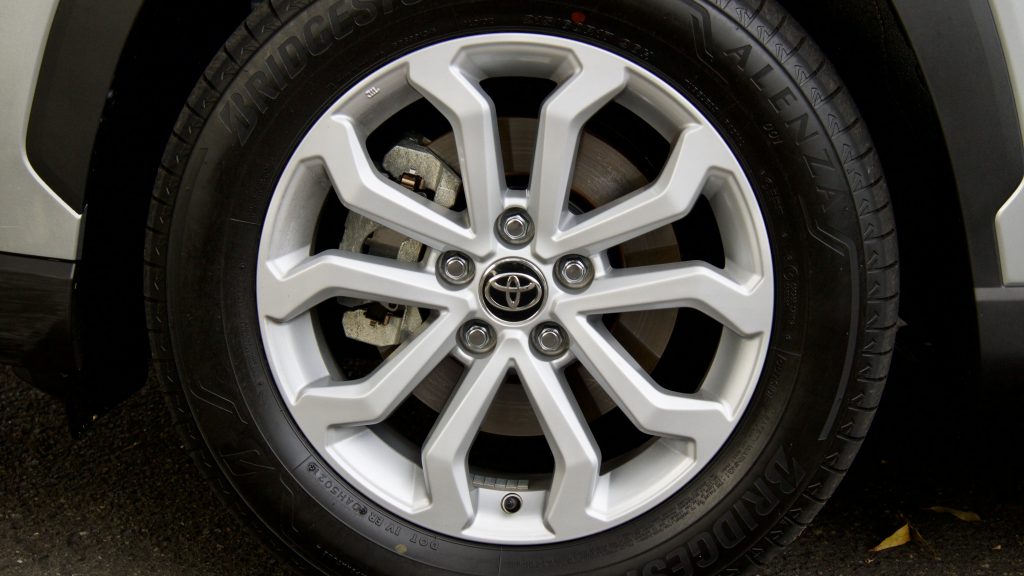
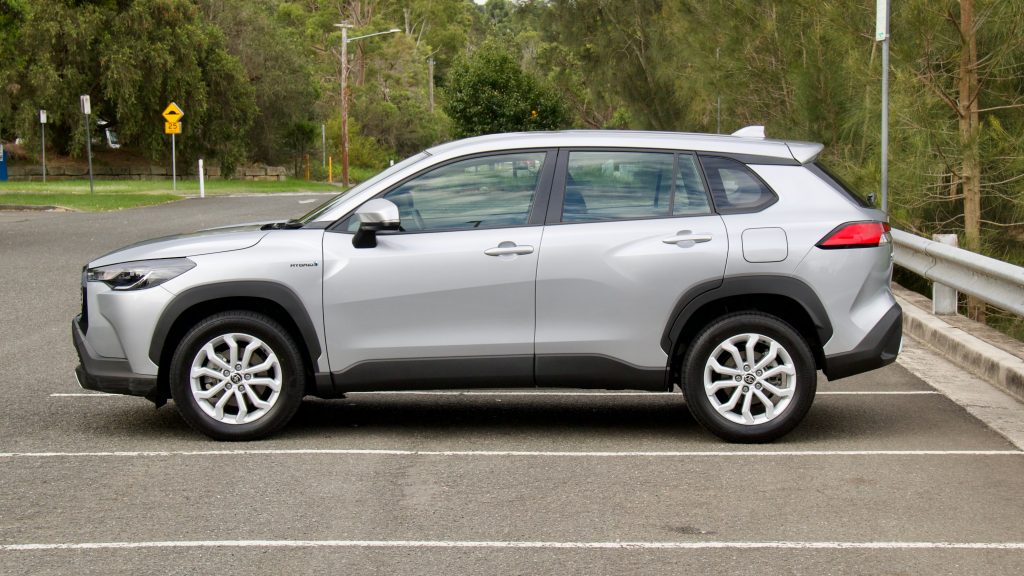
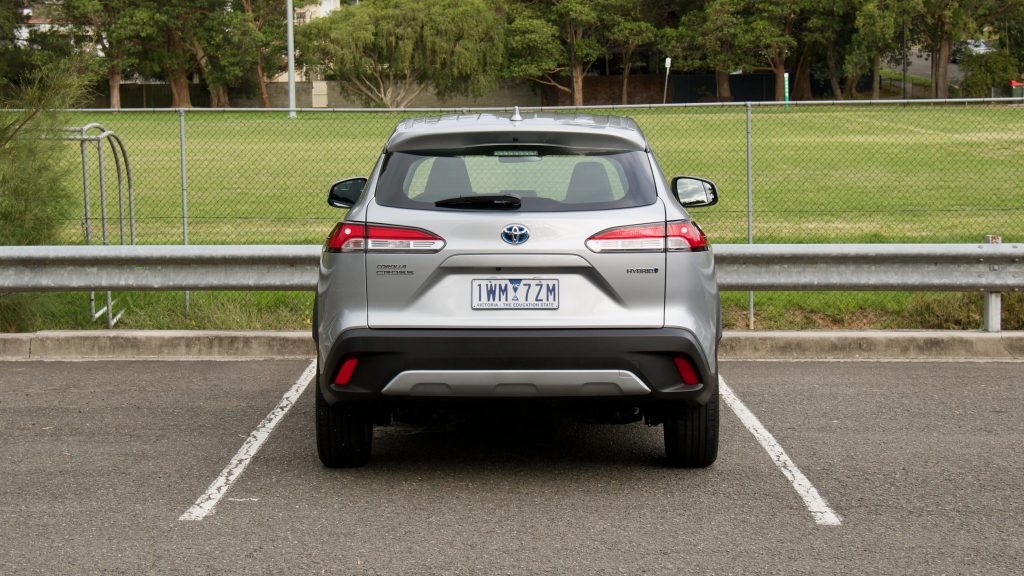
Comparing the most basic hybrid Corolla Cross to mild-hybrid competition doesn’t flatter the Toyota’s asking price. However, it’s important to consider that even the mild hybrid in the CX-30 is nowhere near as efficient as that in the Toyota. Compared to the Niro Hybrid, essentially the only other similarily sized comparable Hybrid, makes the Corolla Cross value equation a lot stronger.
We do think that Toyota has skimped on equipment on the base Hybrid Corolla Cross – we’d like to see a leather steering wheel and gear shifter, automatic wipers, parking sensors and LED daytime running lights to make the the value proposition better.
Performance & Economy: 9.5/10
The 2023 Corolla Cross GXL Hybrid features a 2.0-litre petrol electric hybrid system – the Corolla Cross is the first Australian Toyota to feature this drivetrain, despite it being offered with the Corolla in other markets. In the two-wheel drive hybrid a high compression Atkinson cycle four cylinder engine is paired with an electric motor. Outputs for the petrol engine are 112kW of power at 6000rpm and 190Nm of torque between 4400 and 5200rpm, with outputs for the electric drive motor at 83kW of power and 206Nm of torque. Toyota quotes a healthy combined power figure of 146kW, but doesn’t publish a combined torque figure.
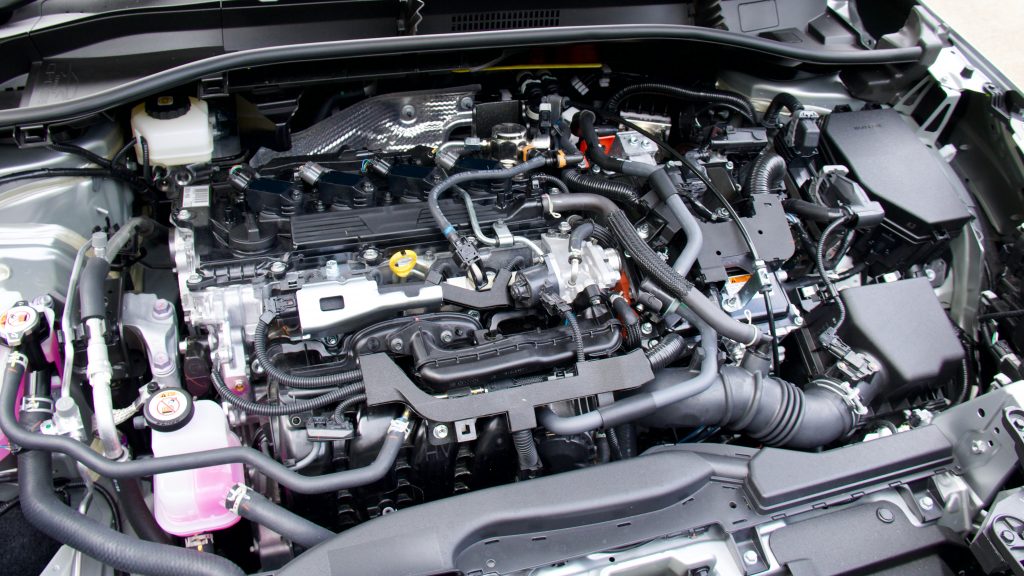
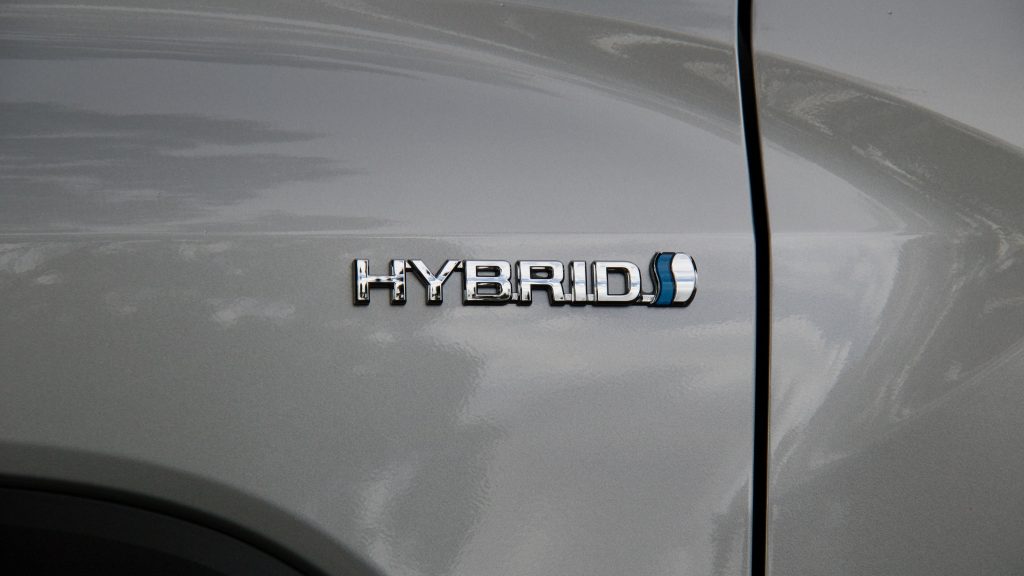
Overall the powertrain is a revelation, and a massive improvement on the 1.8 litre hybrid that does duty in both the Corolla hatch and sedan – that drivetrain is perfectly serviceable, but fast it is not. The new 2.0 litre hybrid is faster than expected – Toyota claims a 7.5 second 0-100km/h time, and this feels about right. Unlike smaller Toyota hybrids, which can feel nippy around town thanks to the instant torque generated by the electric motor, but slow once heavier acceleration is required, the Corolla Cross feels quick in most circumstances. Whether it’s getting up to speed on a highway, overtaking or just running around town, we never felt wanting for power.
The new 2.0 litre hybrid also has lithium-ion batteries, rather than last generation older nickel metal technology used in prior Toyota hybrid system- this change and other tweaks has meant that the Corolla Cross is able to run on pure electric power up to much higher speeds, and the petrol engine simply runs less often – while accelerating from a standstill will often invoke the petrol engine above 40km/h, it will often switch back off at higher speeds. Considered driving can result in impressively high EV to petrol driving ratios – we were often able to obtain scores higher than 80 percent during our time with the Corolla Cross. Like other hybrids we’ve tested, getting the best petrol efficiency possible soon becomes a game.
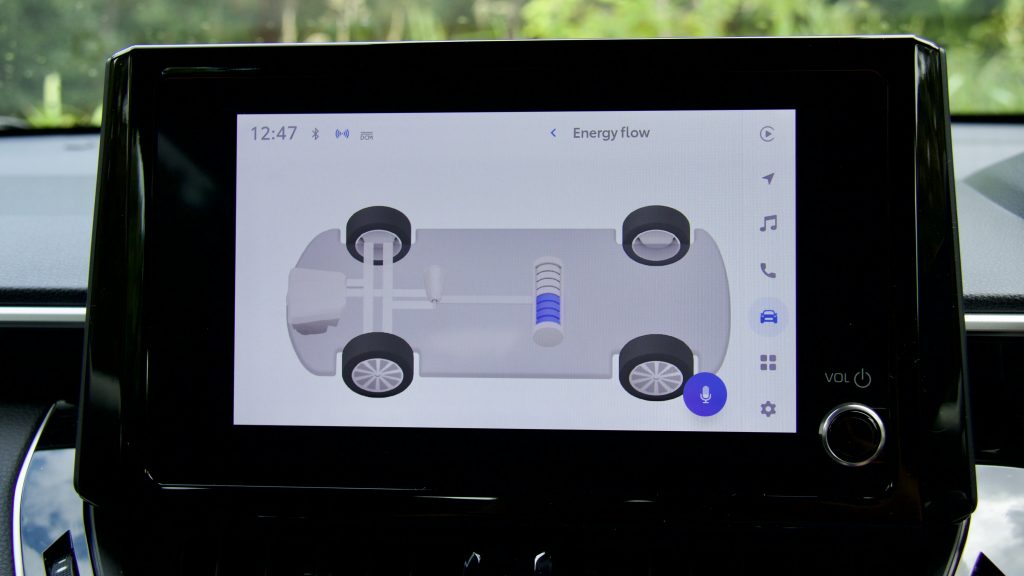
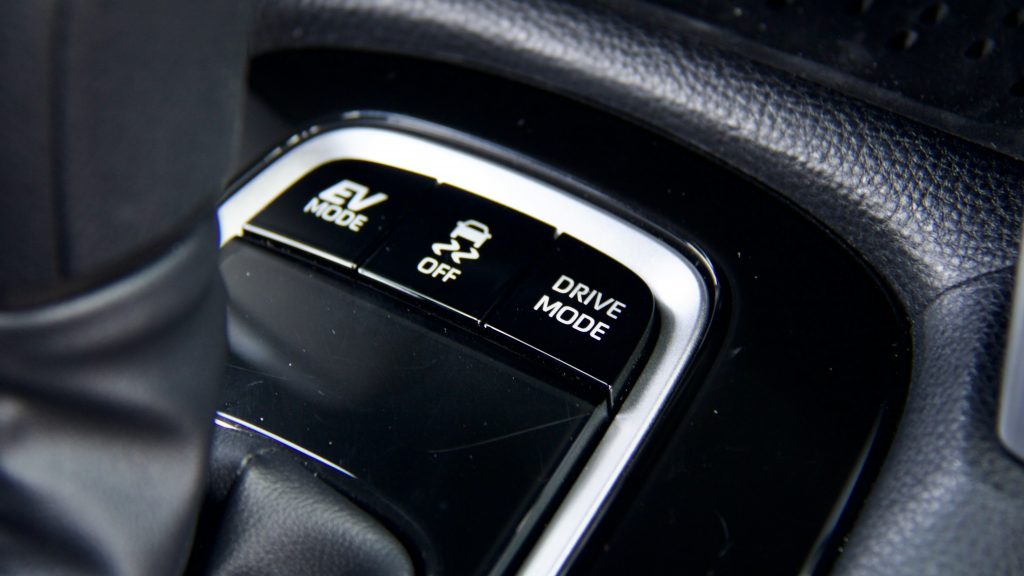
As with all Toyota hybrids, Power is sent to the the front wheels through an ‘e-CVT’ setup, and as in other Toyota Hybrids we’ve tested the transmission is admirable – it has less of the drone and ‘elastic band’ feeling that characterises most CVTs, though if you really stomp on the accelerator for extended periods, drone does become evident. Overall though, the drivetrain is quite refined – the switch from electric to petrol and back again is incredibly smooth, with next to no vibration through the cabin, and there is also less audible feedback.
Across our week with the Corolla Cross, which was spent on a fairly equal combination of suburban and highway driving, we were able to achieve an average fuel usage figure of 4.7L/100km, just 0.4 litres higher than Toyota’s claim of 4.3L/100km. This is an impressive feat, given the size and weight of the Corolla Cross, and the impressive performance of the 2.0 litre hybrid drivetrain. What impressed us less, was the undersized fuel tank. We’re used to getting close to 1,000km range figures from Toyota hybrids, but the Corolla Cross has a tiny 36 litre fuel tank – somehow smaller than the 43L tank in the Corolla hatch. The result is a theoretical range of around 760km from a full fuel tank, assuming the same fuel usage we achieved. Toyota claims the 2023 Corolla Cross GX Hybrid will emit 97 grams of CO2 per kilometre travelled, based on achieving their claimed fuel usage.
Ride & Handling: 8/10
The 2023 Toyota Corolla Cross GX Hybrid has a competent and comfortable ride and handling balance. Riding on seventeen inch wheels shod in quite forgiving rubber, the Corolla Cross offers a smooth and mostly quiet ride. The suspension setup, while simple and lacking the independent rear suspension of AWD models (and the standard Corolla hatch and sedan), remains fairly composed over everything our roads can throw at it and manages to settle quickly most times, though some bumps can catch it out. Most bumps and potholes are soaked up well, and the cabin is well isolated from imperfections. Tyre roar does become noticeable at higher speeds, however this is to be expected and overall suppression of road and wind noise is good.
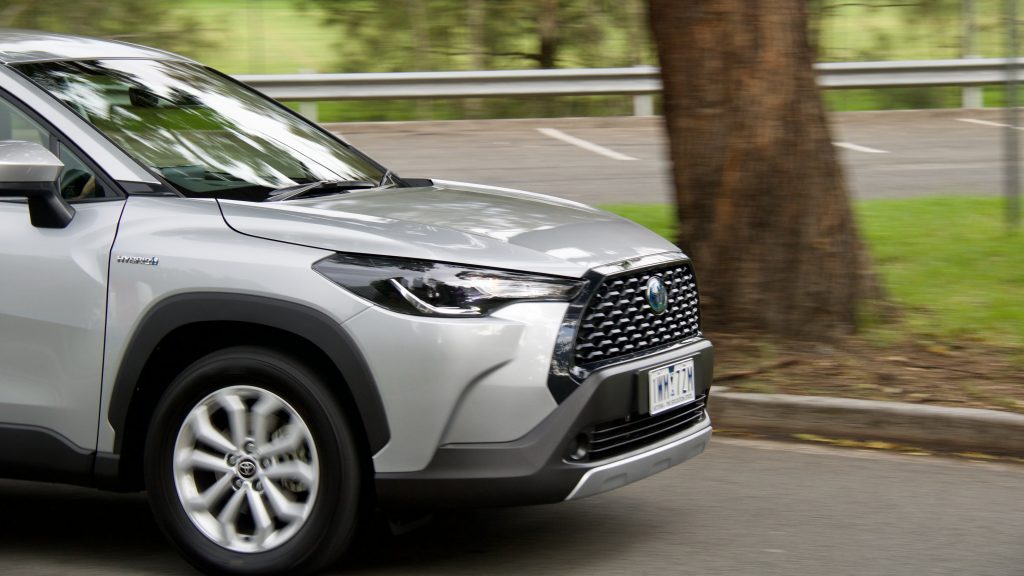
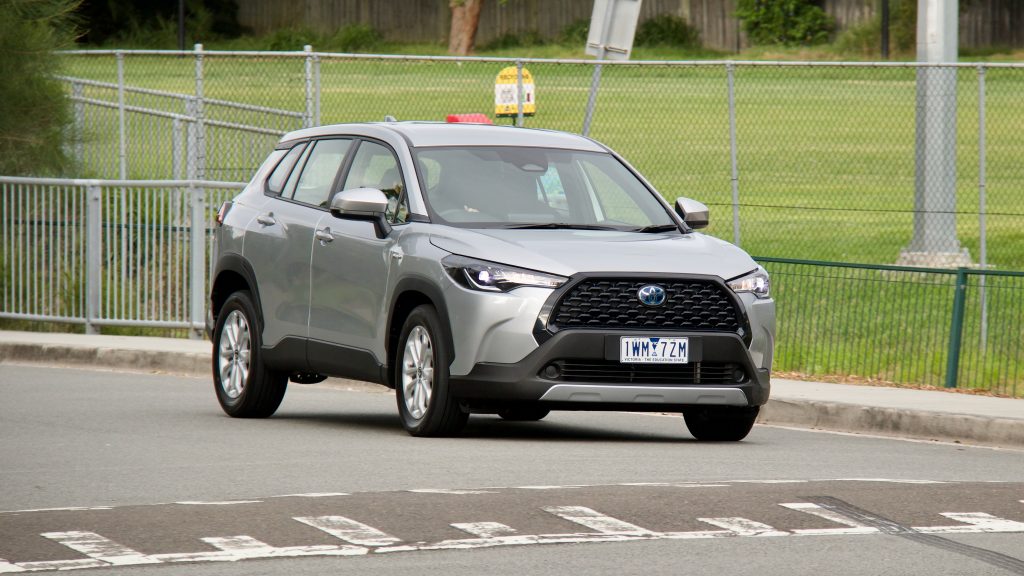
The 2023 Toyota Corolla Cross GX Hybrid isn’t quite the keen handler that the ‘normal’ Corolla hatch is – it definitely feels closer to a small RAV4, though this isn’t entirely a bad thing. The steering is well weighted, but is definitely on the lighter side, though it is pretty accurate and offers fairly good feedback to the driver. This helps make the Corolla Cross feel at home in the city, weaving in and around tight streets. Body control is better than average for a small SUV, and getting adventurous by pushing the Corolla Cross around corners, is more than capable of rewarding the driver through remaining planted and composed – like it’s hatch and sedan siblings. Even in a car that prioritises at comfort over ‘sportiness’, Toyota’s recent push towards making more ‘driveable’ cars has paid off again.
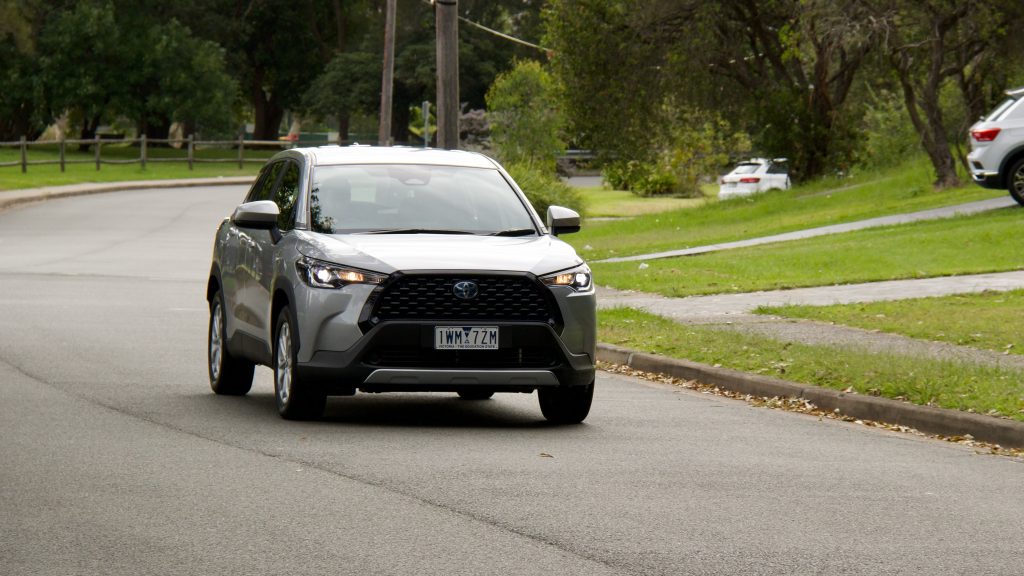
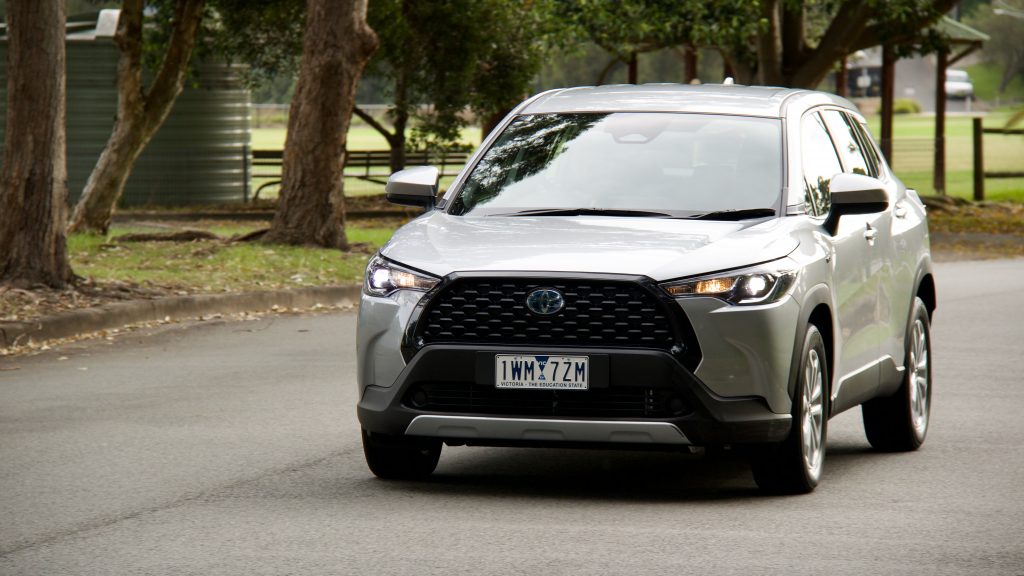
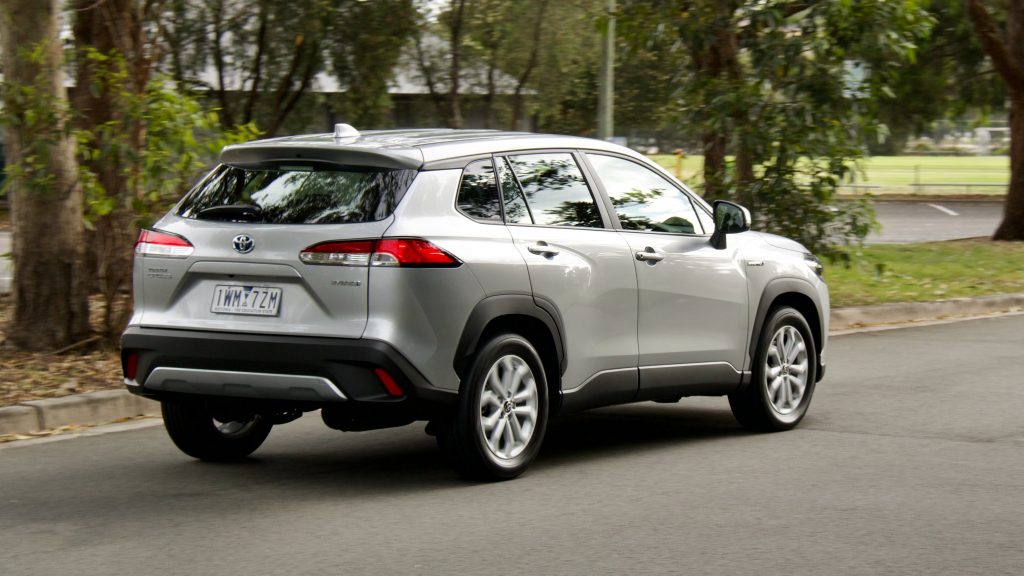
Visibility from the driver’s seat is good, with fairly large windows all around – the large side mirrors help with visibility and the reversing camera is one of the best quality cameras we’ve seen Toyota use – it’s nice and clear. What is unfortunate is the lack of parking sensors, which makes parking a little more difficult than it otherwise should be – buyers have to shell out additional money for the next spec up GXL for these to become standard equipment.
Interior & Practicality: 8/10
You’d be forgiven for having a sense of deja-vu when stepping into the cabin of the 2023 Corolla Cross GX Hybrid – most elements are lifted from the Corolla, which for the most part, isn’t a bad thing. In the GX, it’s a modern space, though not hugely exciting or special. One unfortunate change from the standard Corolla range is that the top of the dashboard isn’t soft touch, instead being a hard scratchy plastic – though this applies to the whole Corolla Cross range. The biggest sin in our view though, is the polyurethane steering wheel. On a $40,000 car, we’d really expect a leather steering wheel – it’s a strange move given the smaller Yaris Cross has this as standard across the range. On the positive side, the lower dashboard (expect the small section to the right of the steering wheel) is covered in a leatherette material plus both the centre console armrest and door armrests are covered in fabric, to at least lift the ambience a little.
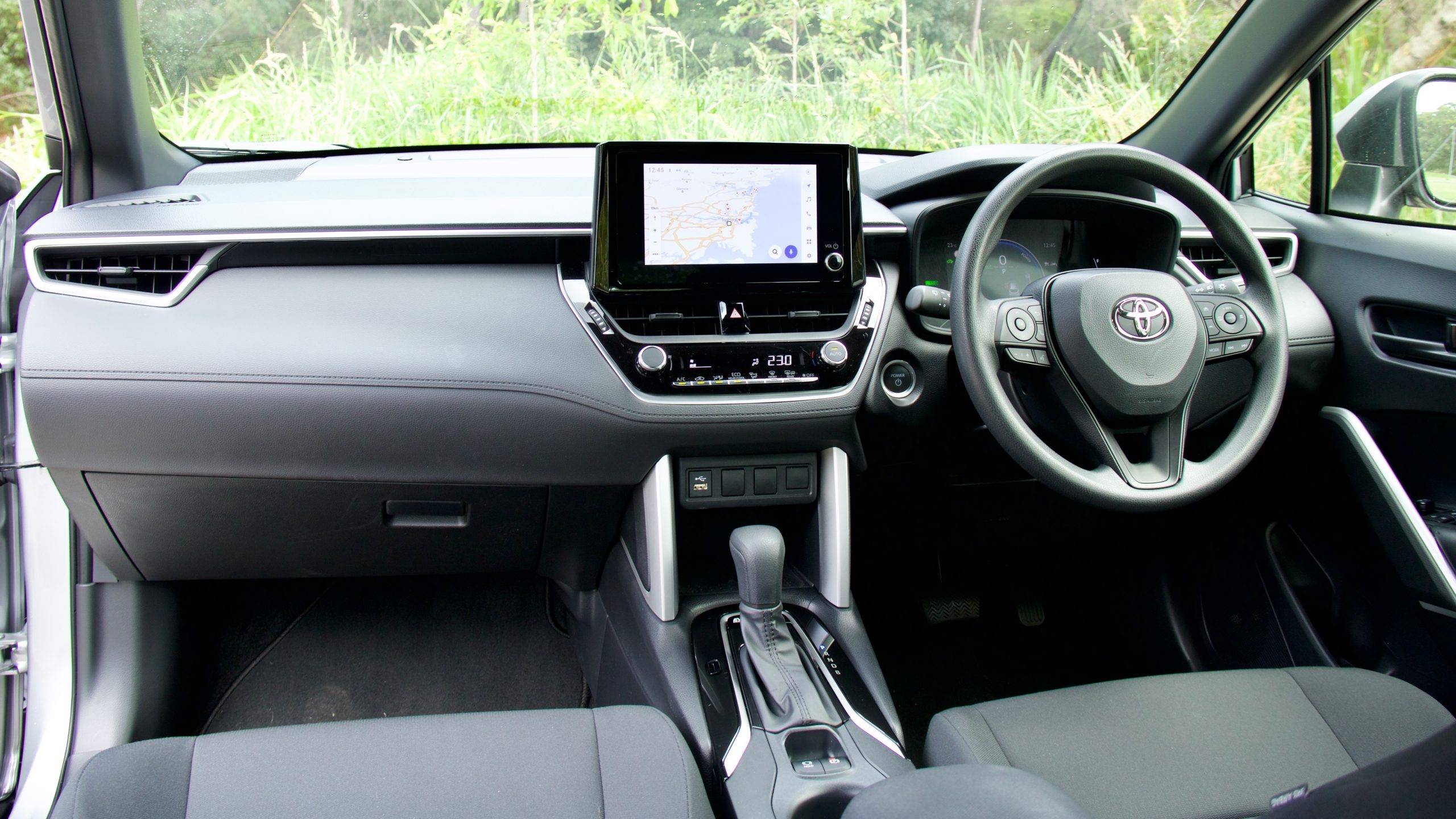
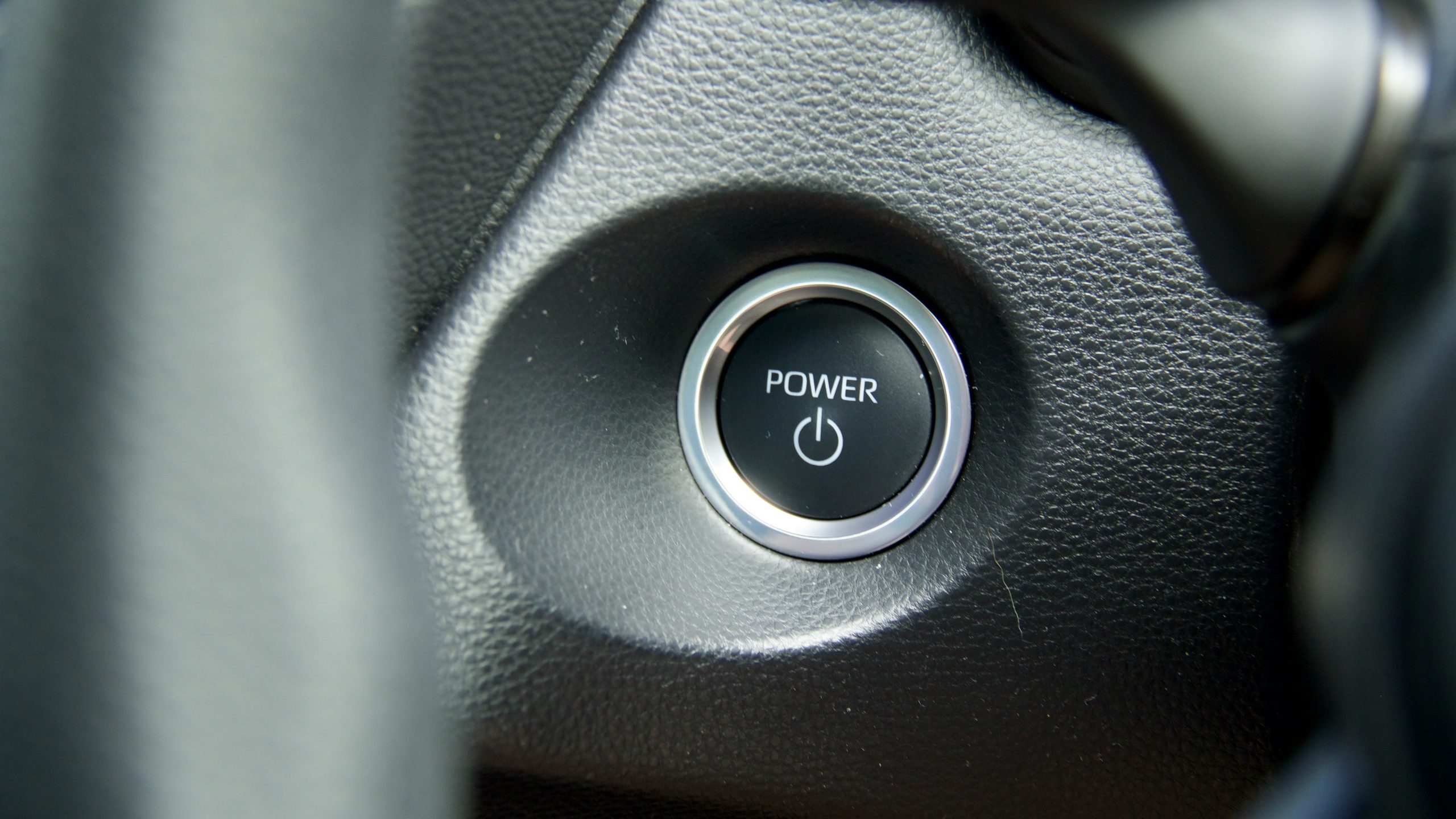
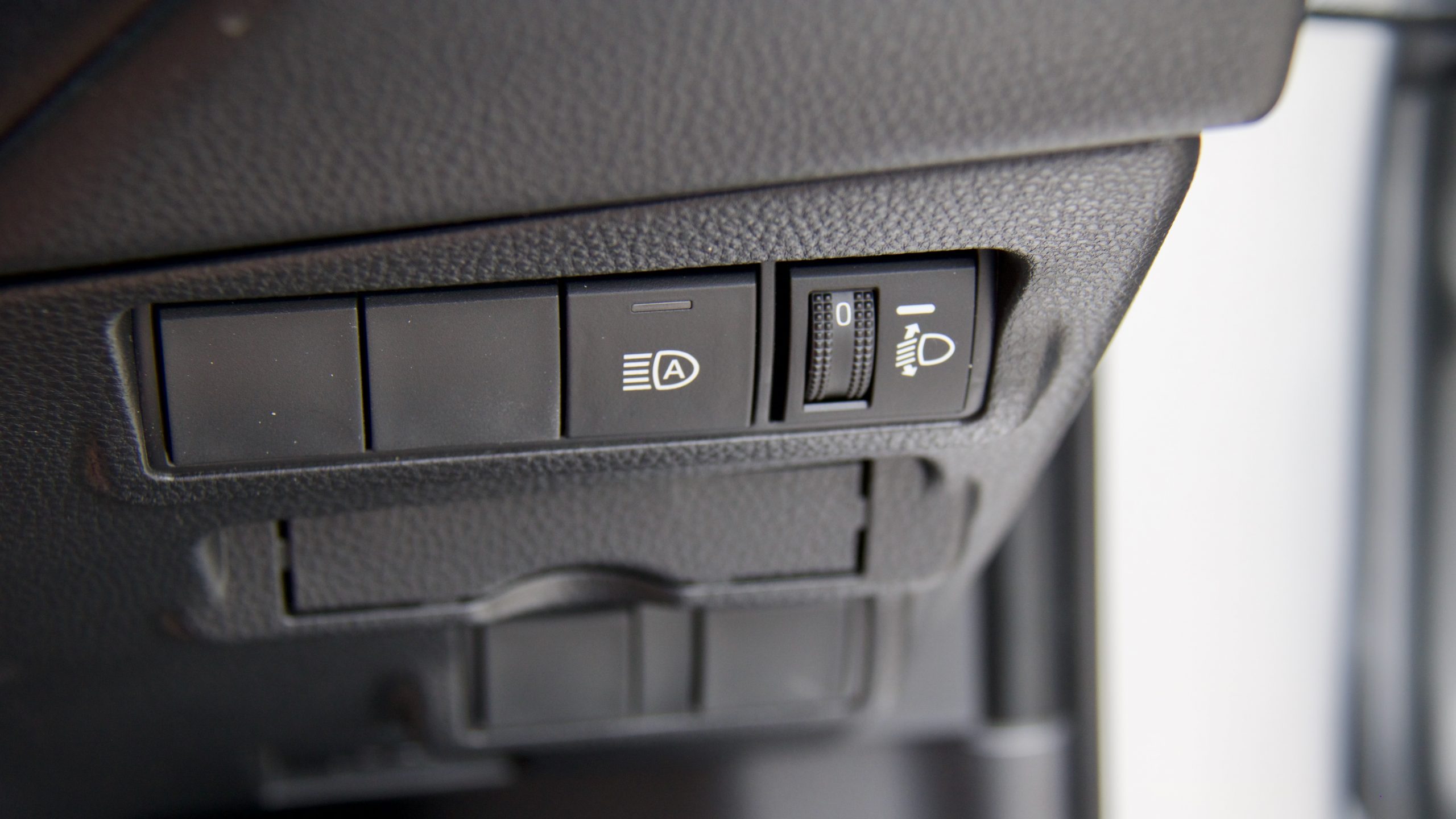
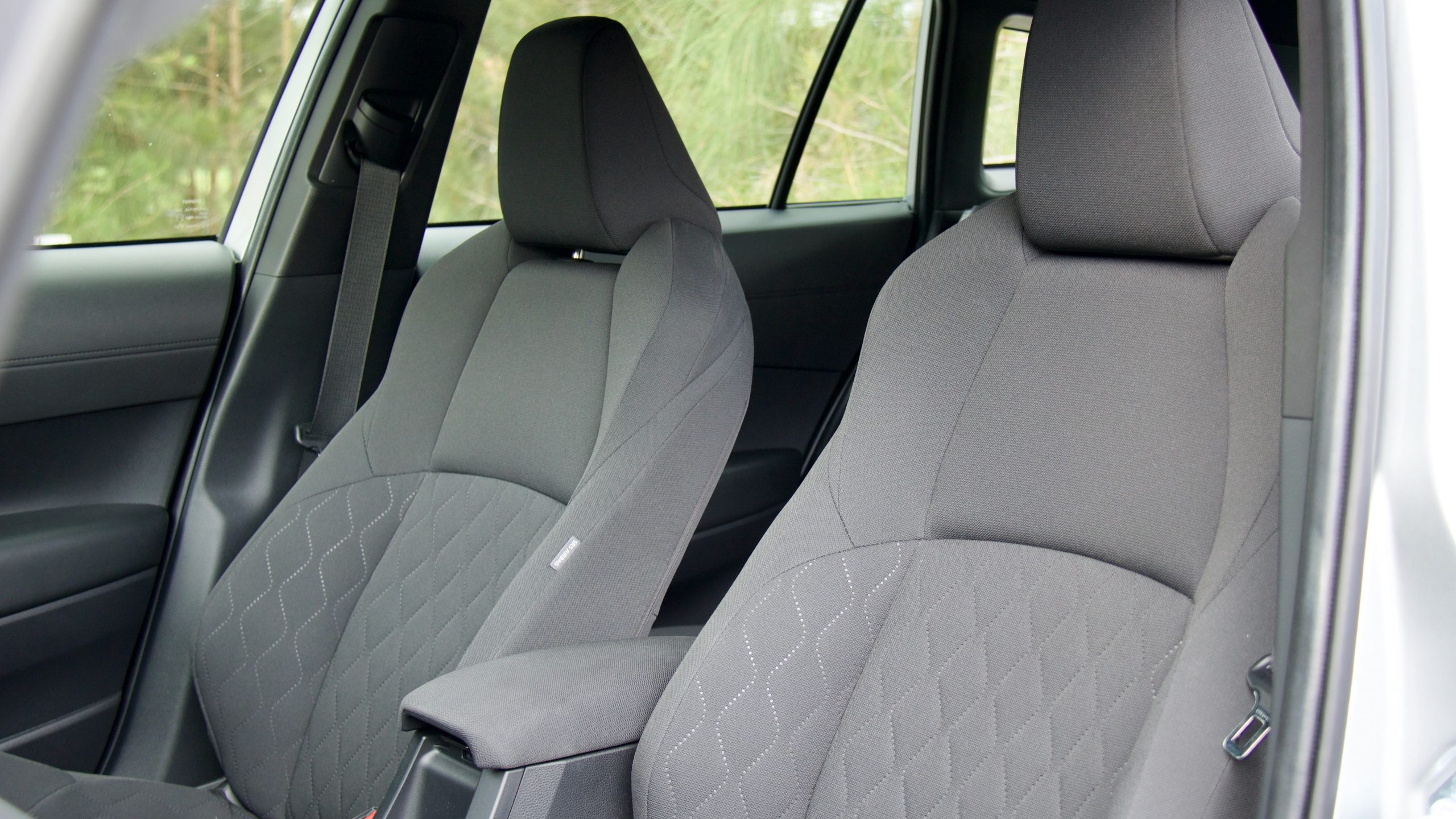
True to recent Toyota form, the switchgear throughout the cabin is lovely – all the dials and buttons are all well weighted and give excellent feedback, which does contribute to a sense of quality. There are some faux metal and piano black inserts and flourishes to break up the space a bit and add a bit of interest to the deign. Storage throughout the cabin is reasonable with a medium sized glovebox, front door bins with cupholders, front centre cupholders and a phone storage cubby.
The front seats feature cloth upholstery with an interesting diamond-like design – the seat shapes are also from the Corolla hatch and we found them to be quite comfortable and quite form hugging with good bolstering and support. We were pleasantly surprised to see driver’s electric lumbar adjustment as a standard feature across the entire Corolla Cross range. Apart from Lumbar adjustment, there are six other ways of manual adjustment for the driver, so finding a comfortable driving position is easy. The same can’t be said for the passenger seat, which makes do with four ways of manual adjustment.
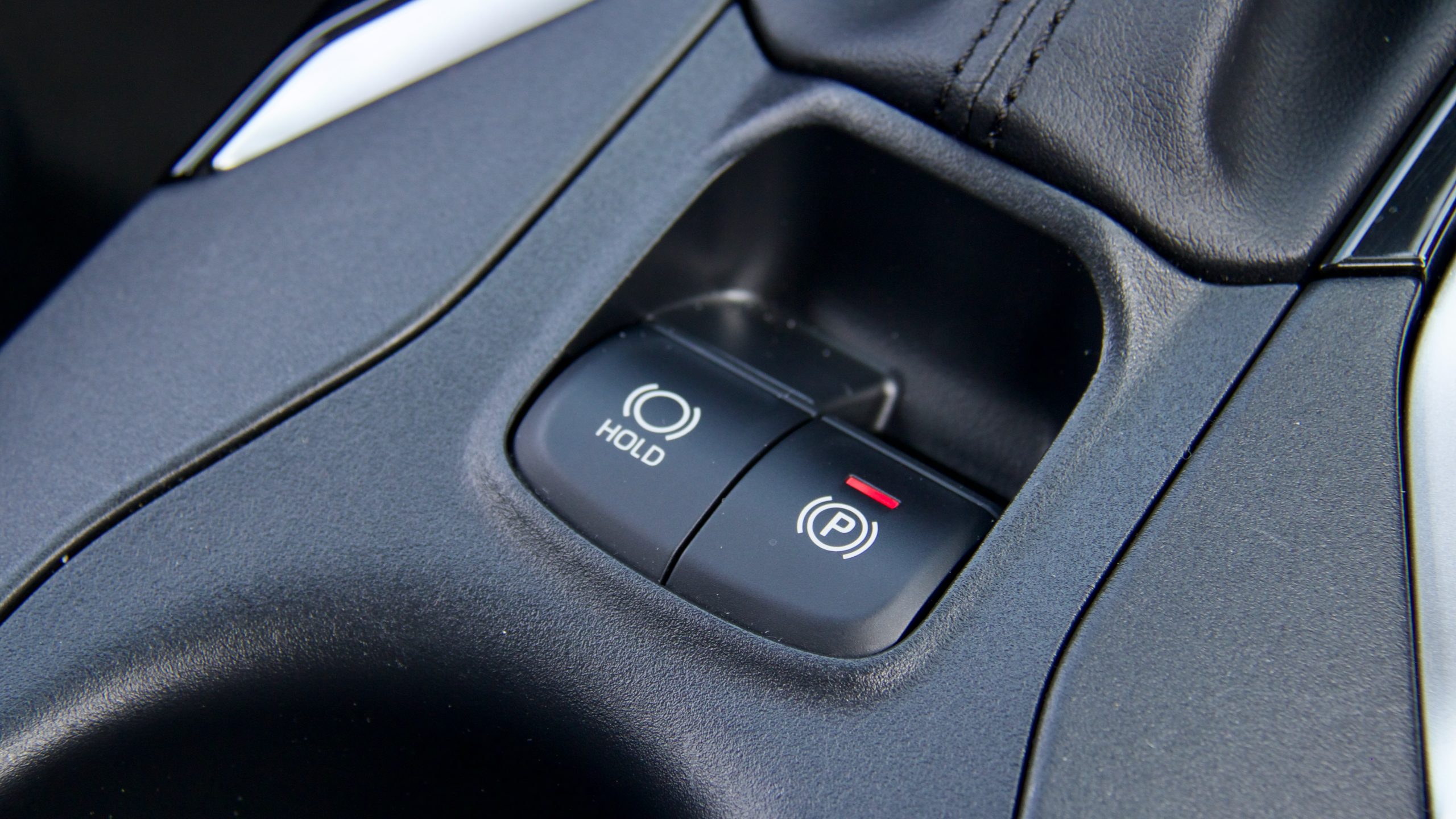
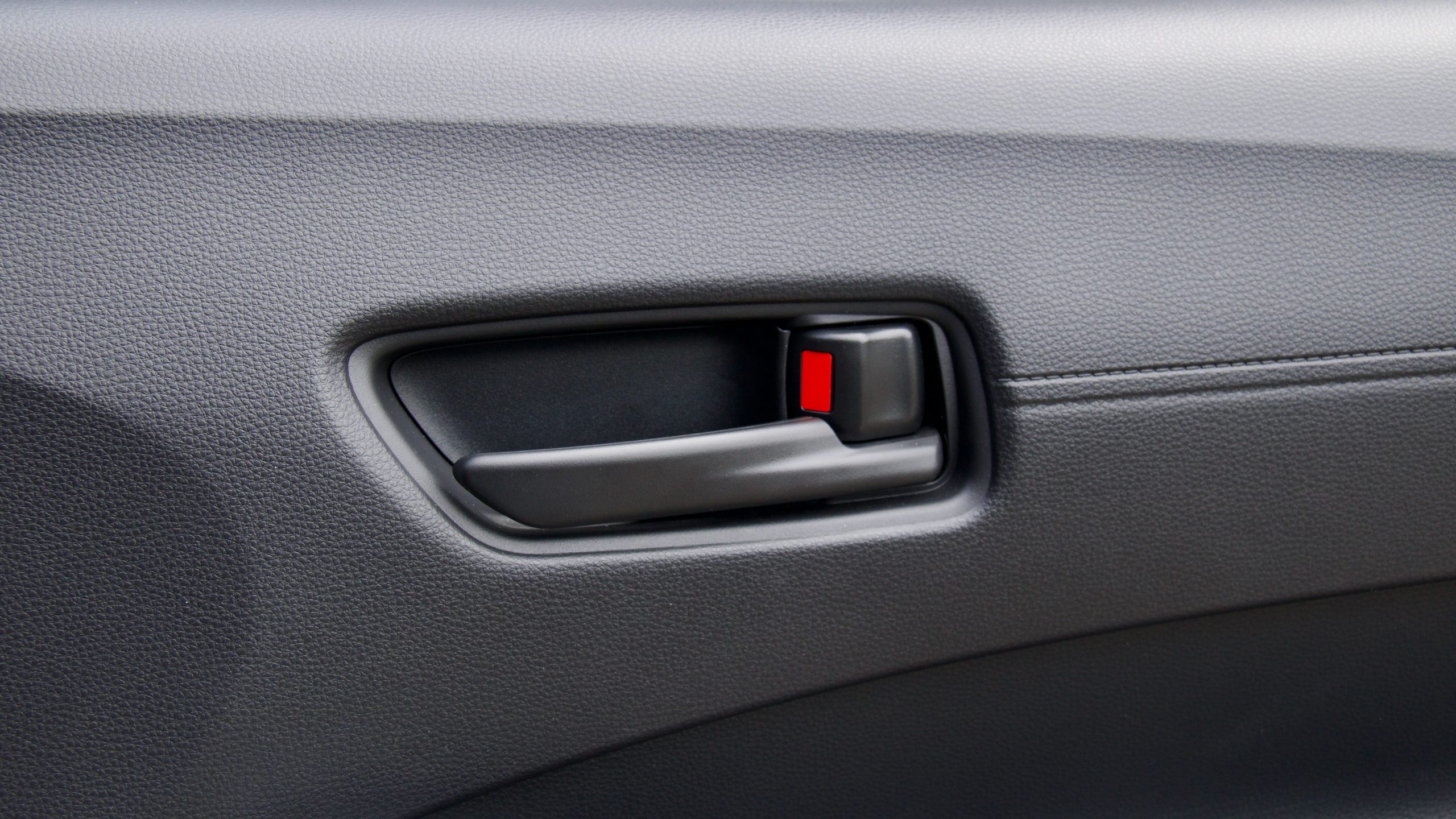
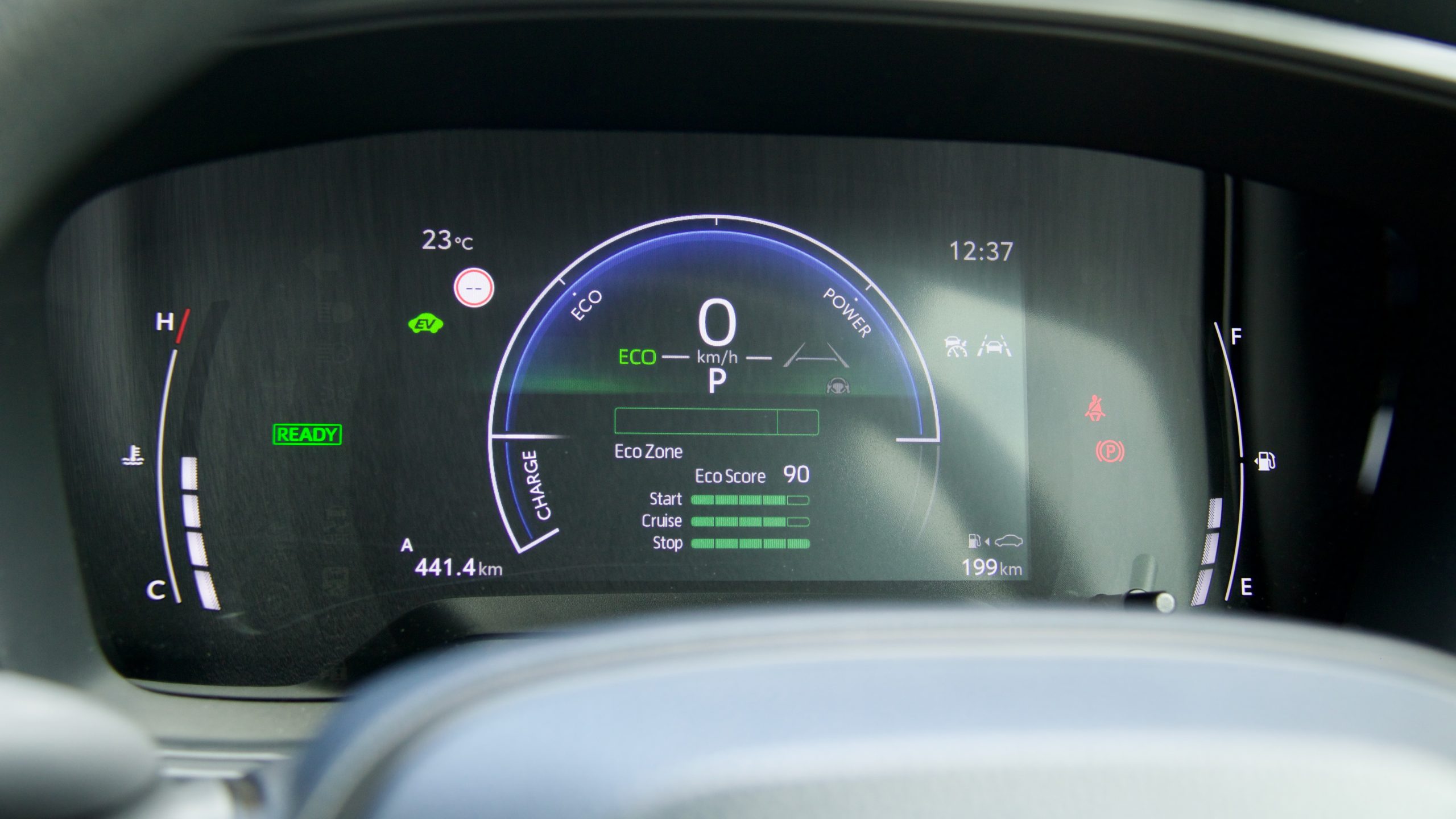
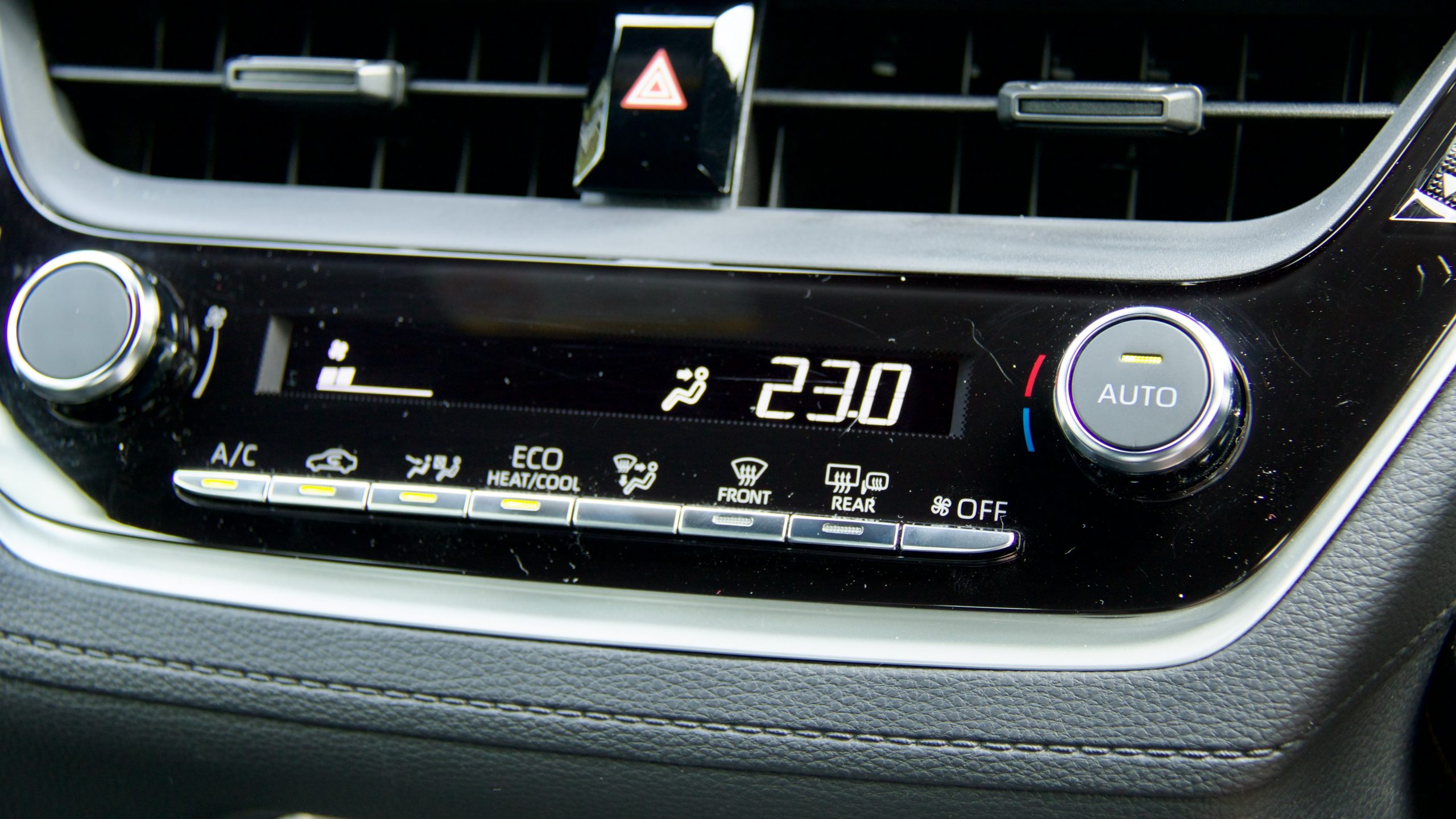
Ahead of the driver sits a 7.0-inch digital semi instrument cluster, which has reasonably crisp graphics and is flanked by gauges either side. Compared to the old driver’s display, we think it’s a bit of a step back. As there is no dial, the ‘eco meter’ (or tachometer if the driver chooses), takes up a huge part of the screen. Only a small amount of space for customisable displays of driving data – the end result is that the new screen can only really show the same amount of information that the old 4.2-inch Toyota driver displays did – drivers still need to flick through pages. We think a slight redesign of cluster could greatly improve the experience.
The centrally mounted 8.0-inch touchscreen is a completely new system, which is rolling out across the Toyota range is in many ways a major improvement over Toyota’s previous systems. The screen itself is a high resolution display with fluid animations and the new software reacts quickly to touch. The graphics used across the system feel modern and cohesive. Phone mirroring is provided by wired Android Auto, and the new (to Toyota) wireless Apple CarPlay. We were very impressed by how reliably CarPlay worked on the Corolla Cross, given we’ve found it glitchy on other cars. We also liked that turn-by-turn directions from CarPlay were also displayed on the driver’s display – another new to Toyota feature.
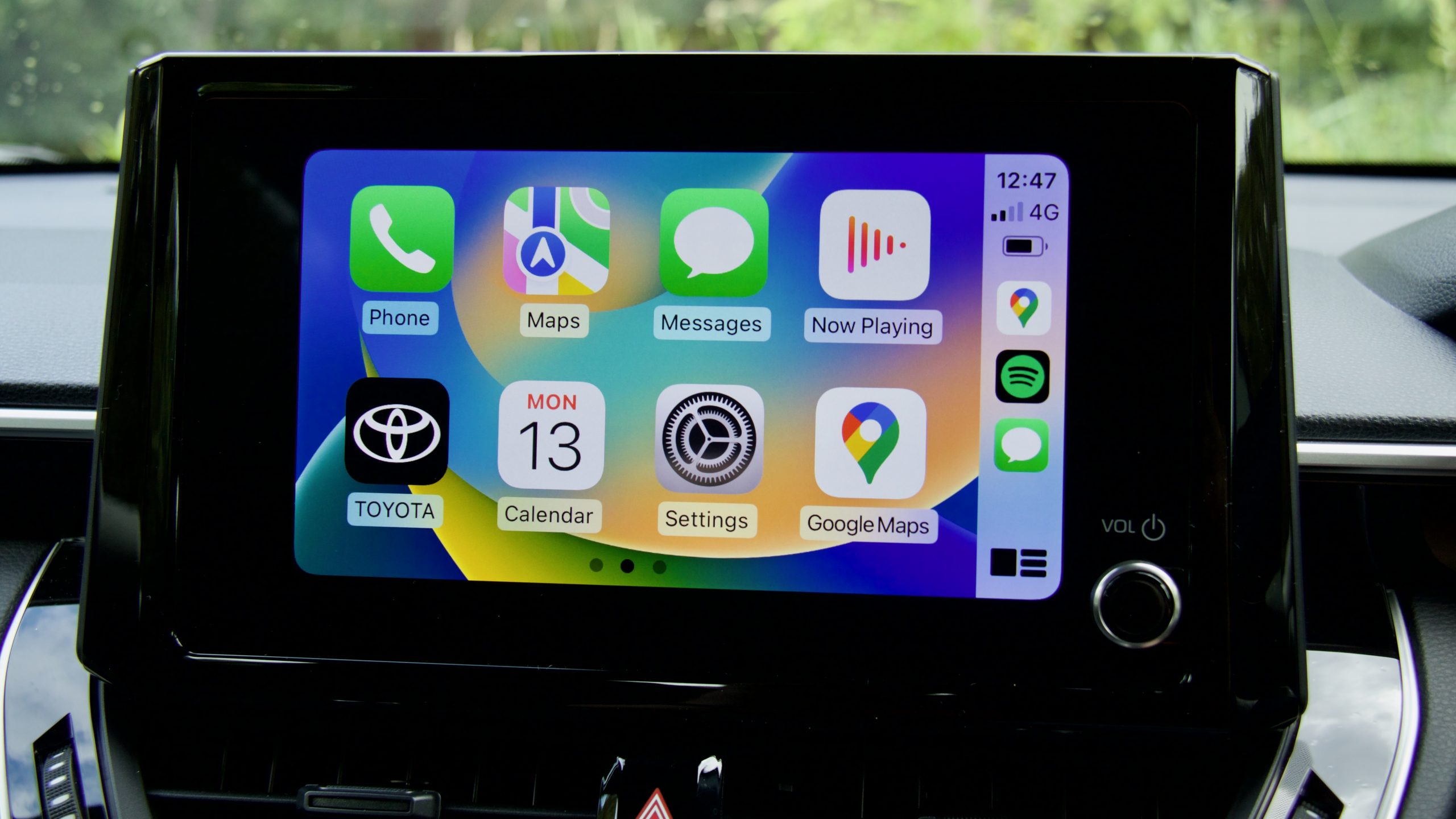
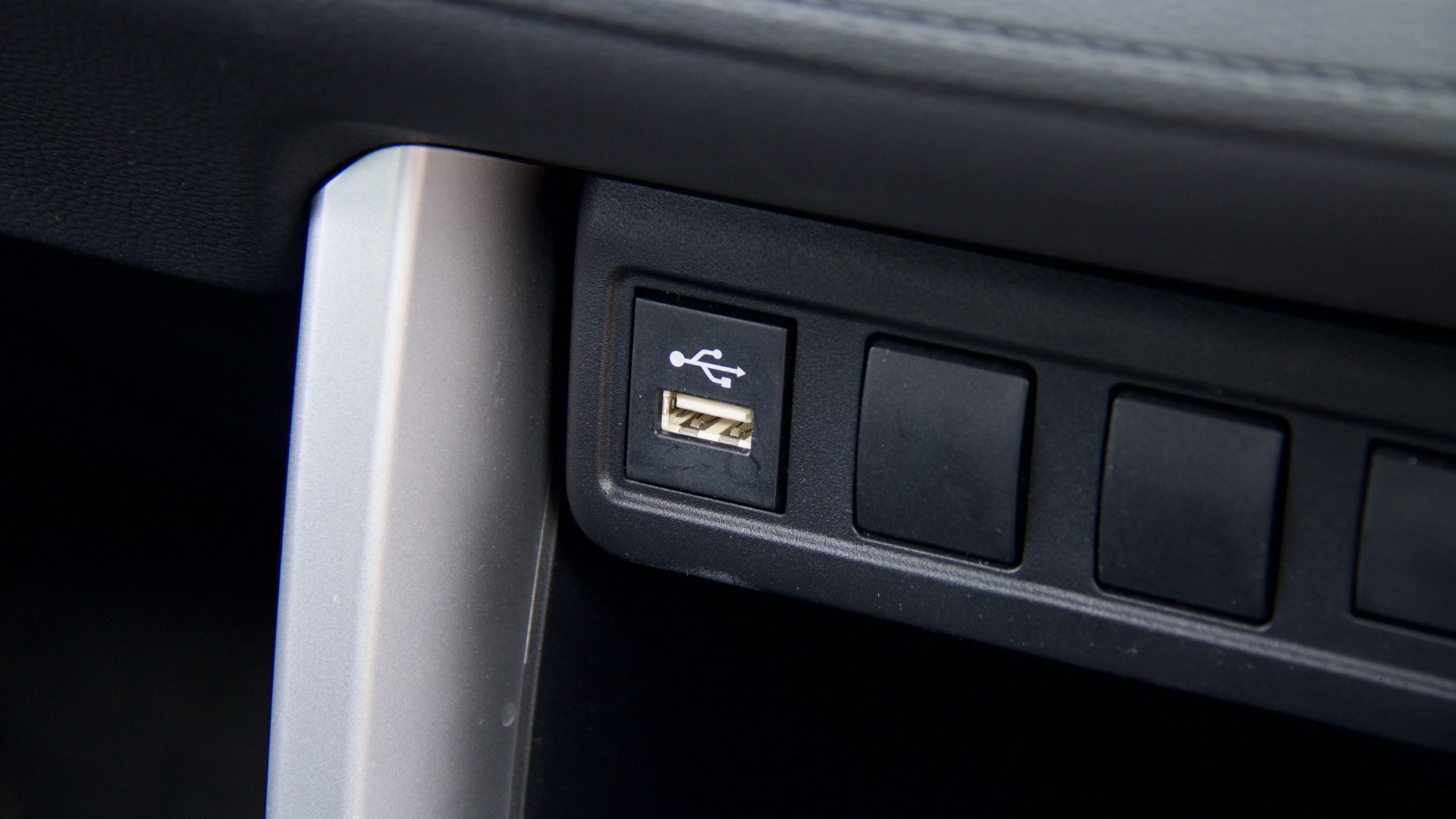
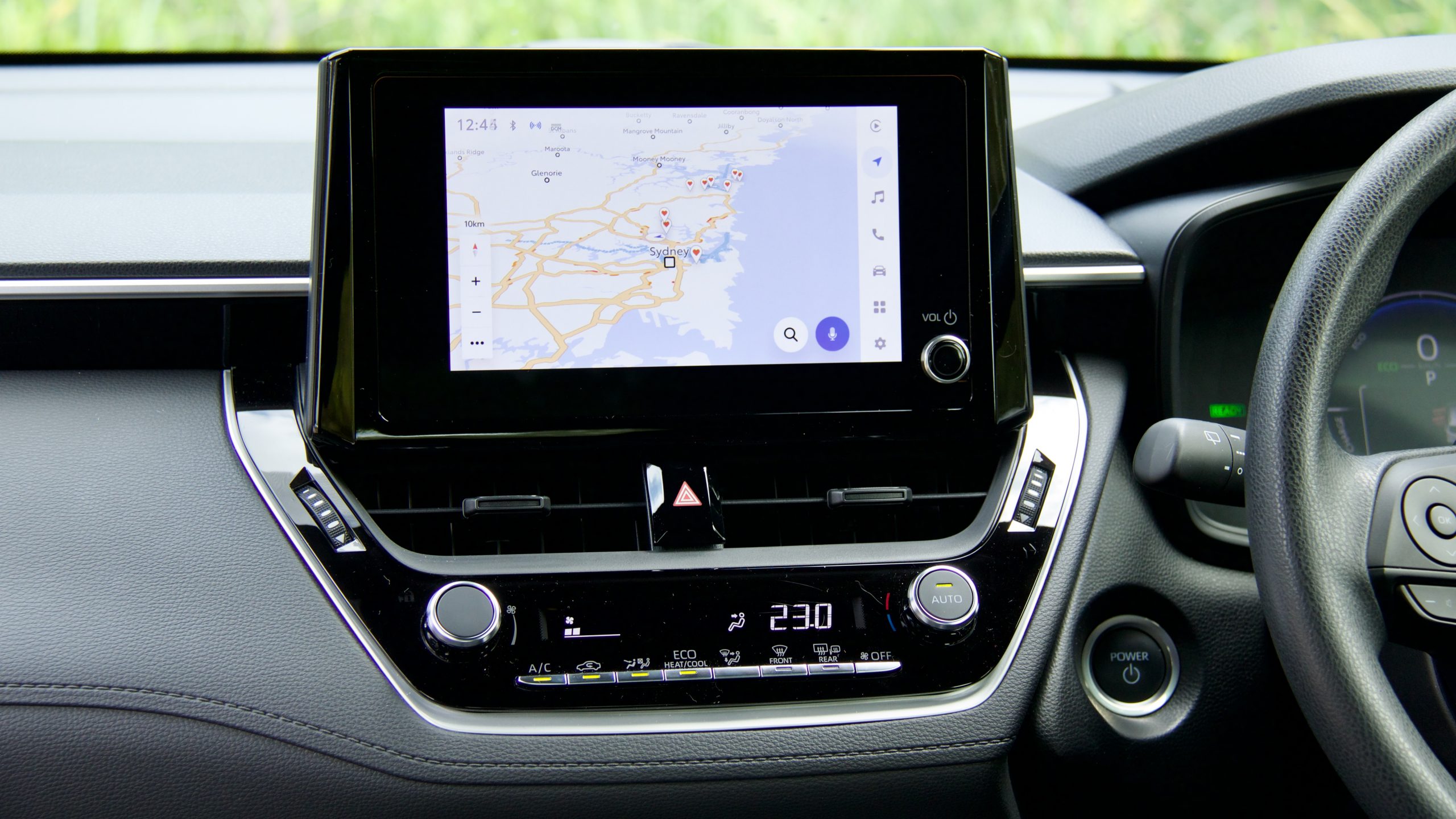
While the new infotainment system is excellent in many ways, it’s not perfect. The system doesn’t have a home button, or even a home screen for that matter. The lack of home button is frustrating when needing to switch from phone mirroring to any other infotainment function – if the driver is using CarPlay, they must exit out of whatever app they are running to get to the home screen, then navigate between screens to find the Toyota app to exit. A simple physical home button would achieve the same in a single click. In fact Toyota has removed all of the handy physical buttons that used to flank its infotainment screens, except for an off button and volume knob. The result is a large oddly blank black bezel around the screen that makes the screen feel smaller than it is, and the loss of easy switching between infotainment functions. We did however appreciate that Toyota left the volume knob to make quick volume adjustments easy.
When using the ‘Hey Toyota’ voice command, the system could distinguish between commands from the driver’s seat or passenger seat, which is impressive. While reliable and interesting, we don’t know how useful asking the car to wind windows up and down or adjust temperature really is, when it’s quicker to just use a physical button to achieve the same thing. Sound is provided by a six-speaker audio system, while not a premium system, still provided decent sound with good sound rendering and decent bass. There are two USB charging ports up front in the Corolla Cross GX – one in the dash that doubles as infotainment input and a second port in the centre console.
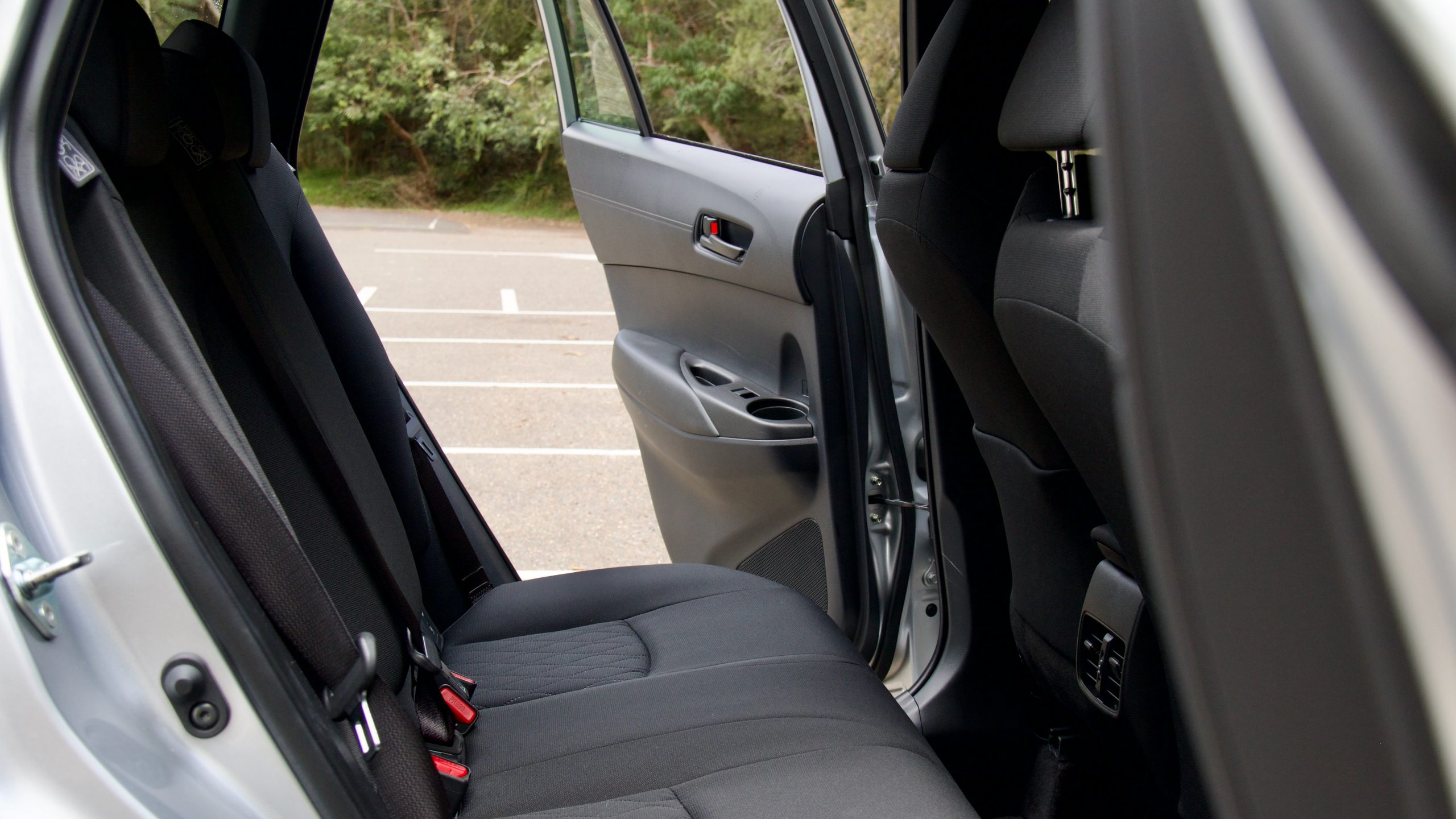
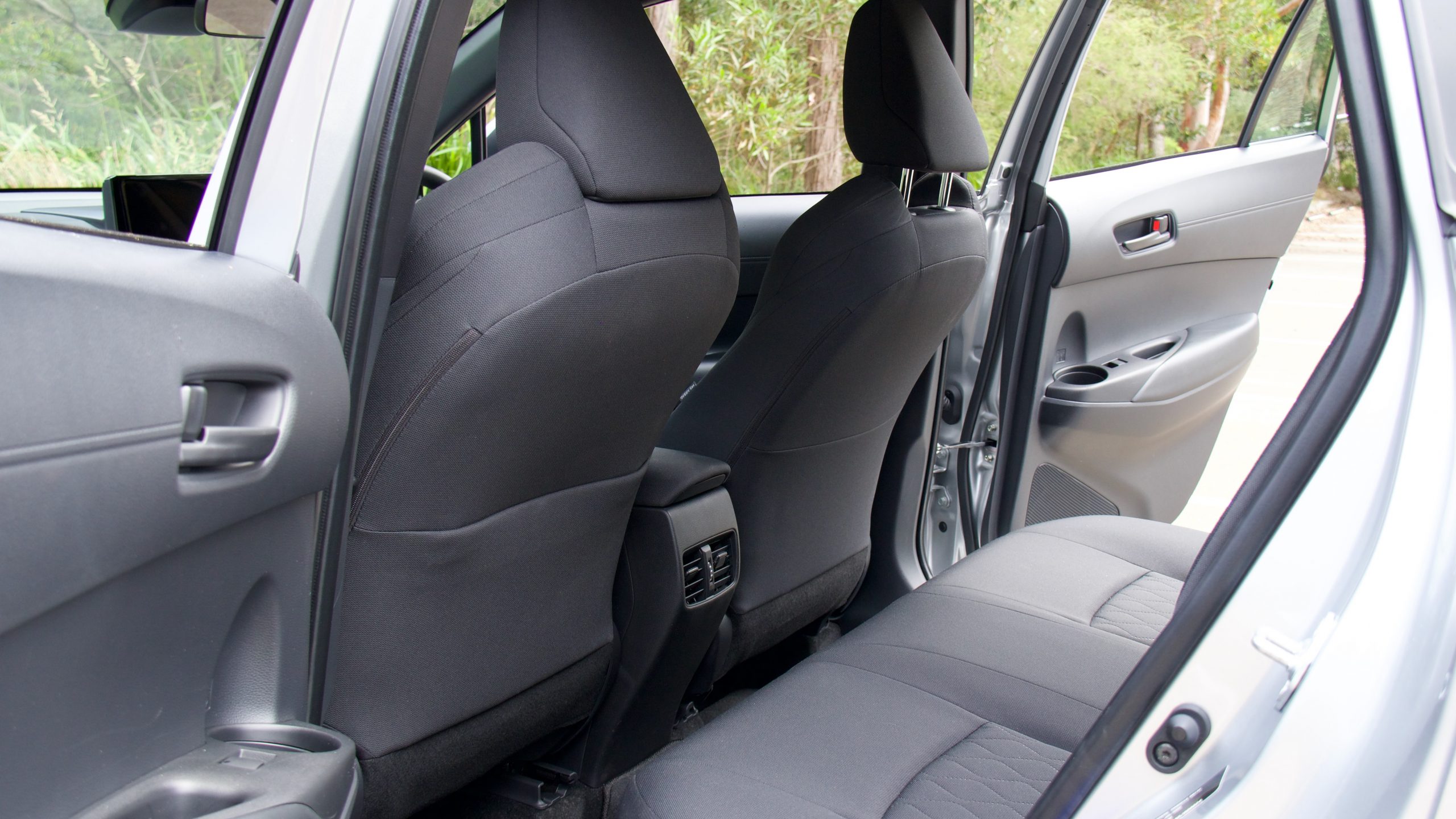
Moving into the second row reveals a much bigger space than the Corolla hatch. The outbound seats have great headroom and good legroom – it’s a comfortable place even for larger adults, though the centre seat is better suited to smaller adults or children with the transmission tunnel eating into legroom. Amenities for the second row are thin on the ground, though include air vents, a single map pocket and cupholders. A rear centre armrest is a top-spec Atmos exclusive and rear USB charging ports are mid spec GXL and above. We would have liked to have seen door bins like on the Corolla sedan, rather than the cupholder-only door cards lifted from the Corolla hatch.
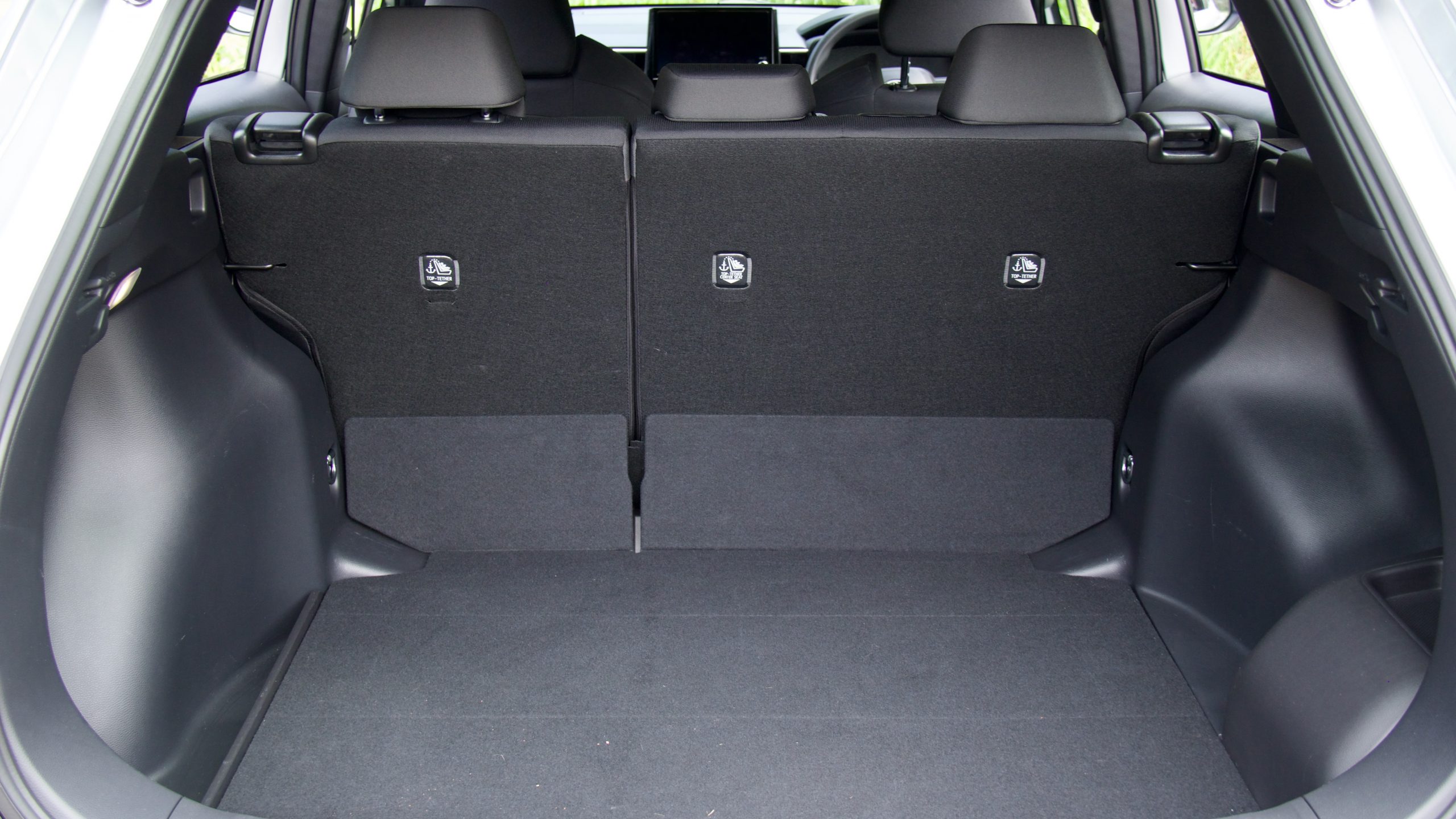
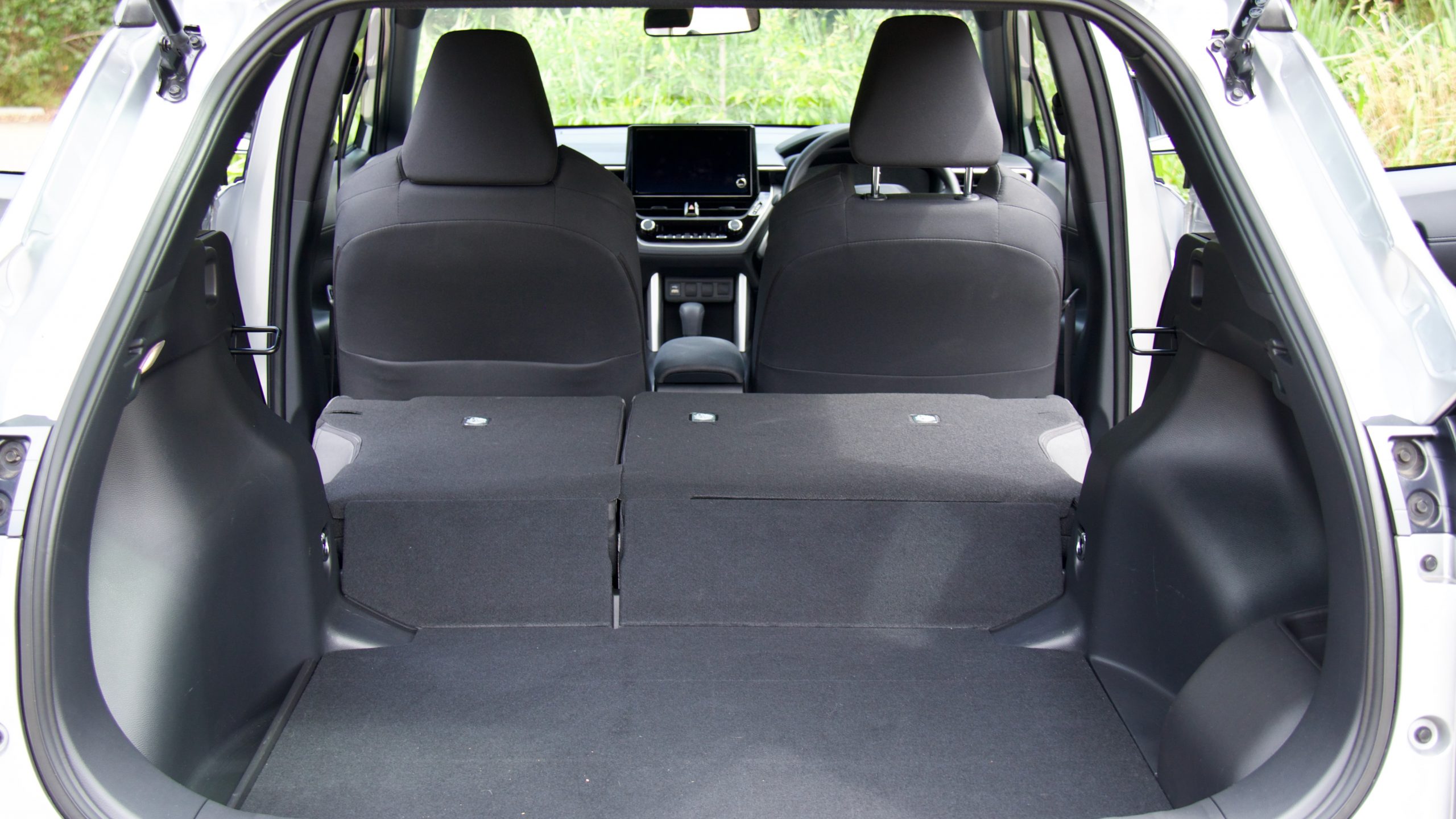
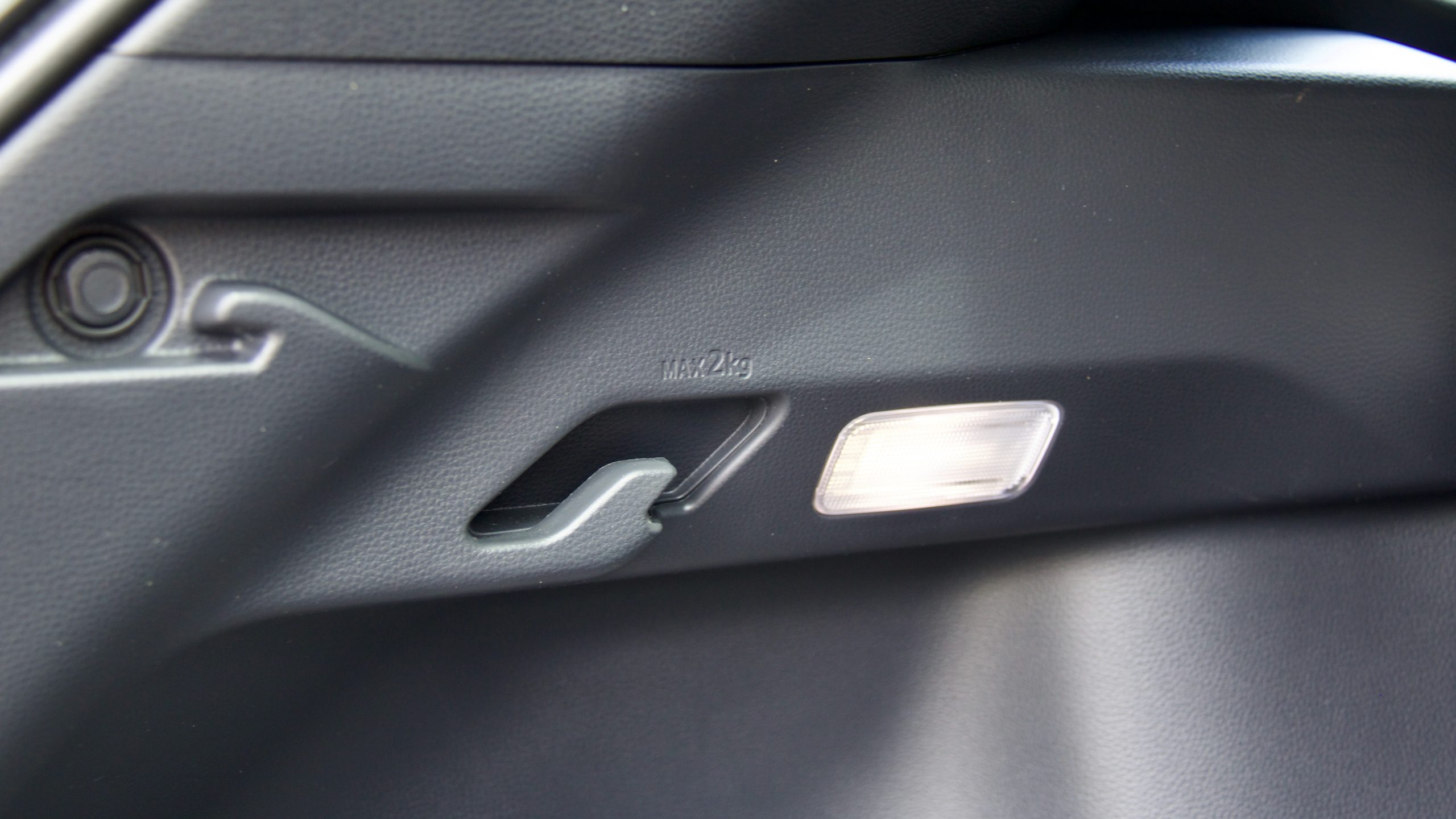
Lifting up the tailgate reveals one of the major benefits of opting for a Corolla Cross over a Corolla hatch – a boot which is nearly double the size in capacity. Measuring in at 425-litres, it’s a reasonable space for the class with the CX-30 measuring in at 317L and the Niro Hybrid with an equal 425L. Unfortunately the rear seats don’t fold anywhere flat with a big ridge when the seats are folded, which does limit the practicality of the space. Under the boot floor is a space-saver spare wheel.
Service & Warranty: 9/10
The 2023 Toyota Corolla Cross GX Hybrid receives a five-year/unlimited kilometre warranty, which is matched by the Mazda CX-30 and bested by the seven year/unlimited kilometre warranty from Kia. Toyota doesn’t include any roadside assistance with the Corolla Cross, whereas Mazda includes five years with the CX-30 and 12 months is included with the Niro, but Kia extends this by 12 months with each logbook service completed at a Kia dealership, to a maximum of eight years.
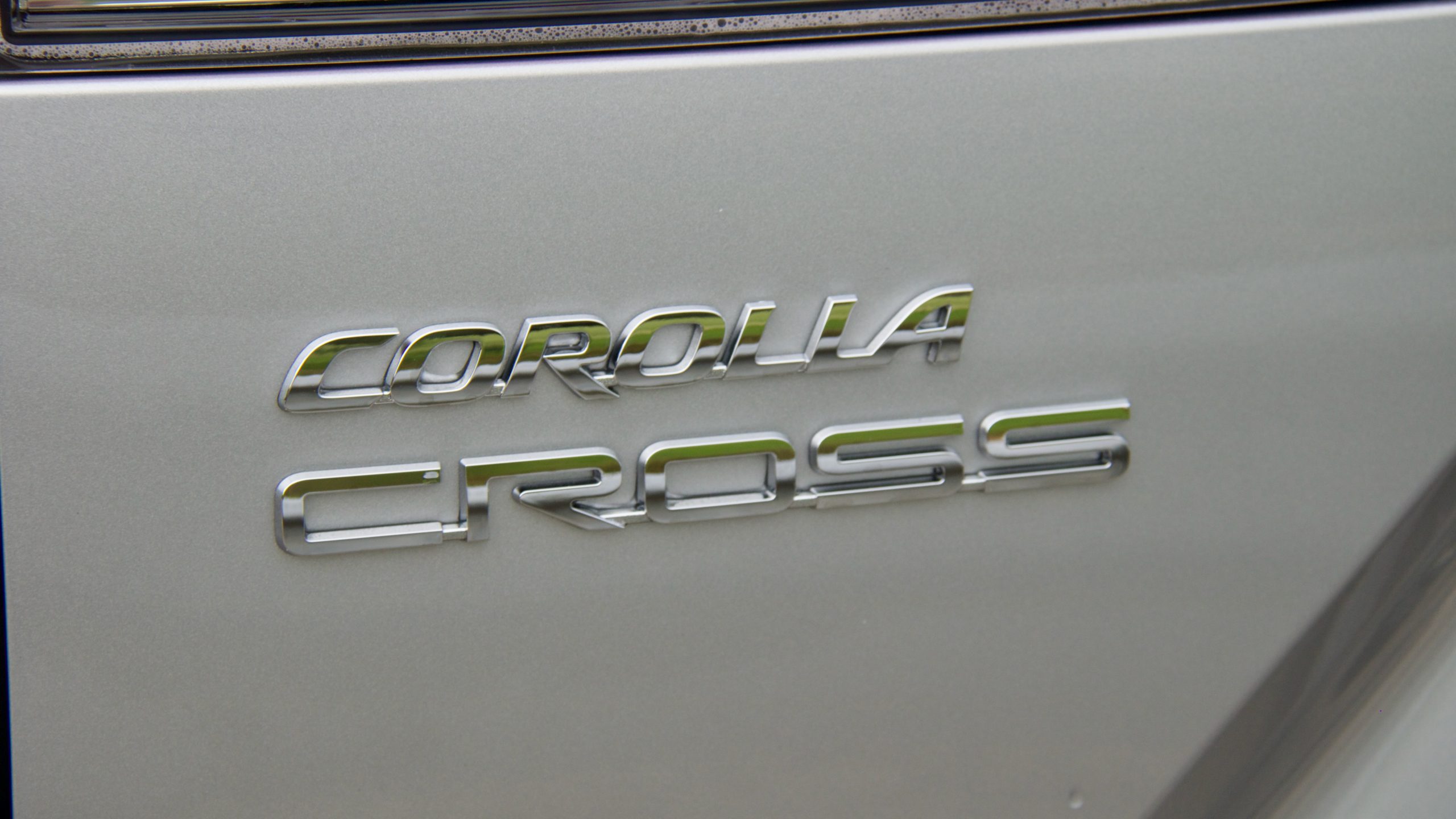
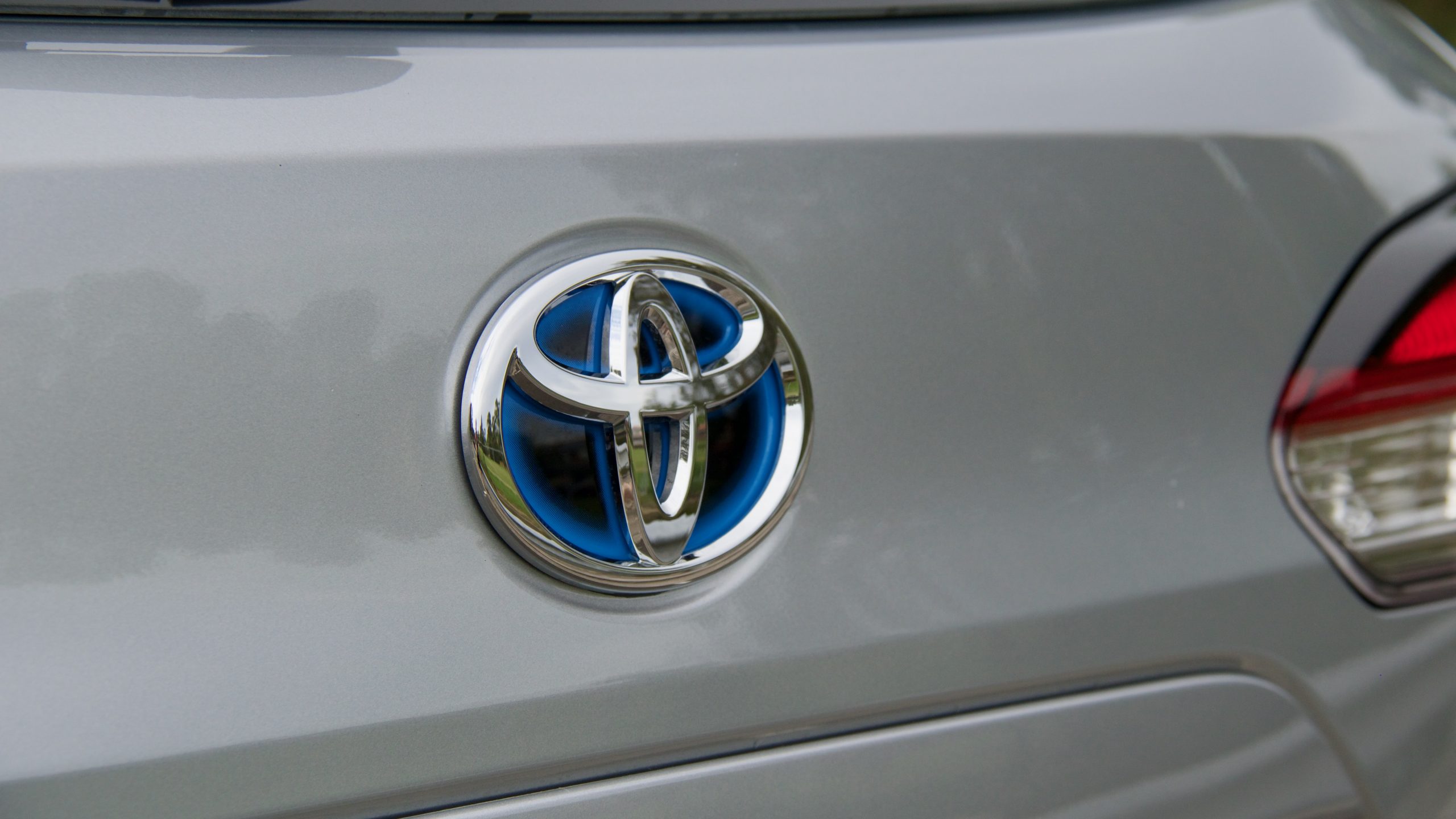
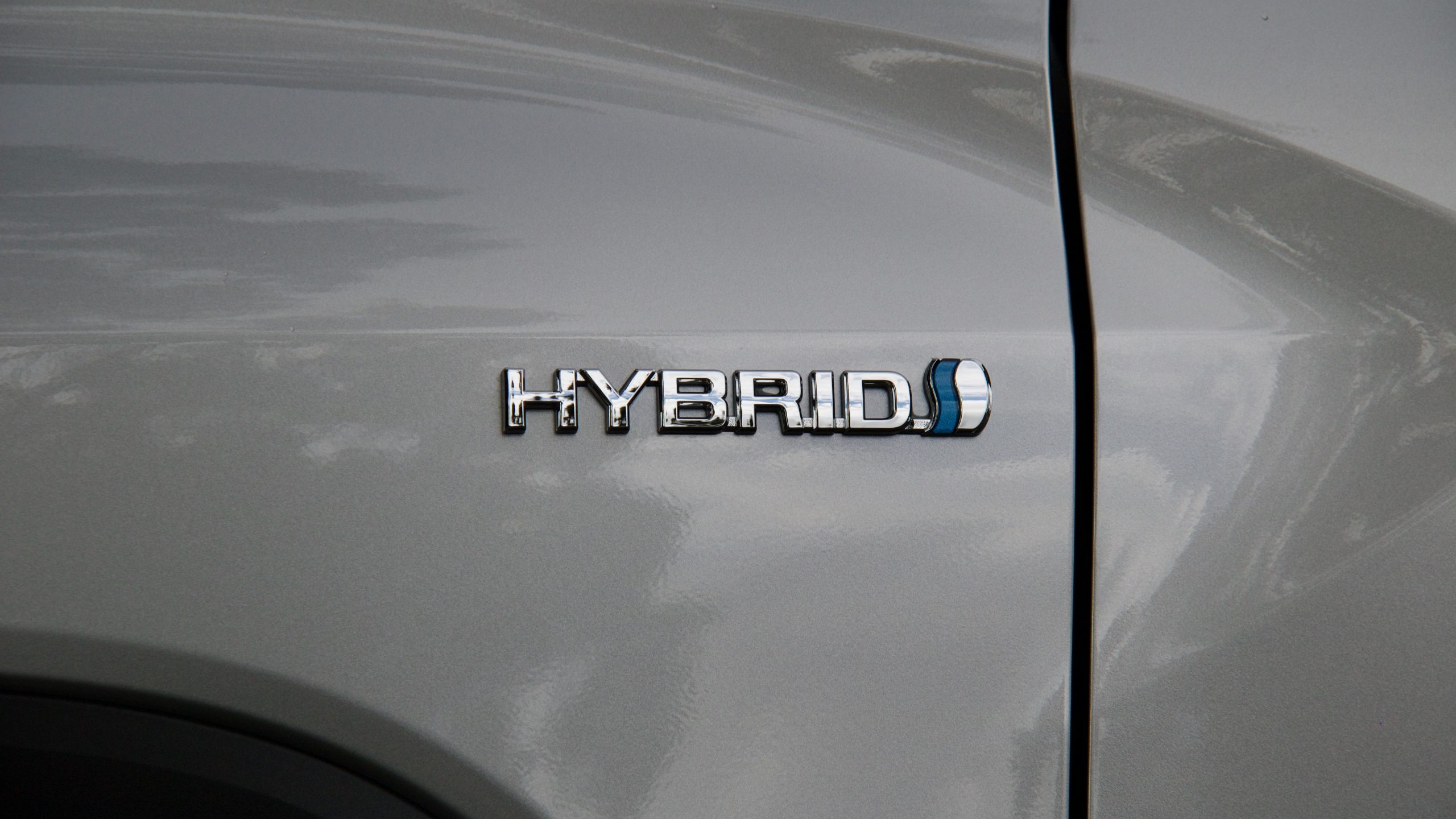
The capped price servicing program for the Corolla Cross covers the first five services, or five years. The servicing intervals are 15,000kms or 12 months, whichever comes first and it costs $1250 to service the Corolla Cross over the first five services. This is inexpensive compared to the Mazda CX-30, which costs $2,021 to service over the same period, with shorter 10,000km/12 month service intervals and prices capped for the first five services. The Niro is also relatively expensive to service, costing $2,334 over the first five services with 15,000kms/12 month service intervals and prices capped for the first seven services.
The 2023 Toyota Corolla Cross GX Hybrid DiscoverAuto Rating: 8.4/10
The 2023 Toyota Corolla Cross GX Hybrid takes one of Australia’s popular nameplates and updates it to align with Australia’s 2023 car buying preferences – essentially rectifying common complaints levelled at the current Corolla Hatch, namely the small rear seat and boot, and adding the benefits of an SUV with the higher driving position and ease of entry and exit. We think package that Toyota has created will be a goldilocks size, appealing to many who don’t want a huge SUV, but will appreciate the added boot and rear seat space over the small hatchback class – essentially it’s a mini RAV4.
On top of this, the new 2.0 litre-hybrid system is impressively efficient, but also is probably Toyota’s nippiest hybrid. Its efficiency really sets it apart from the competition, given the more expensive Kia Niro is the only other similar-sized hybrid.
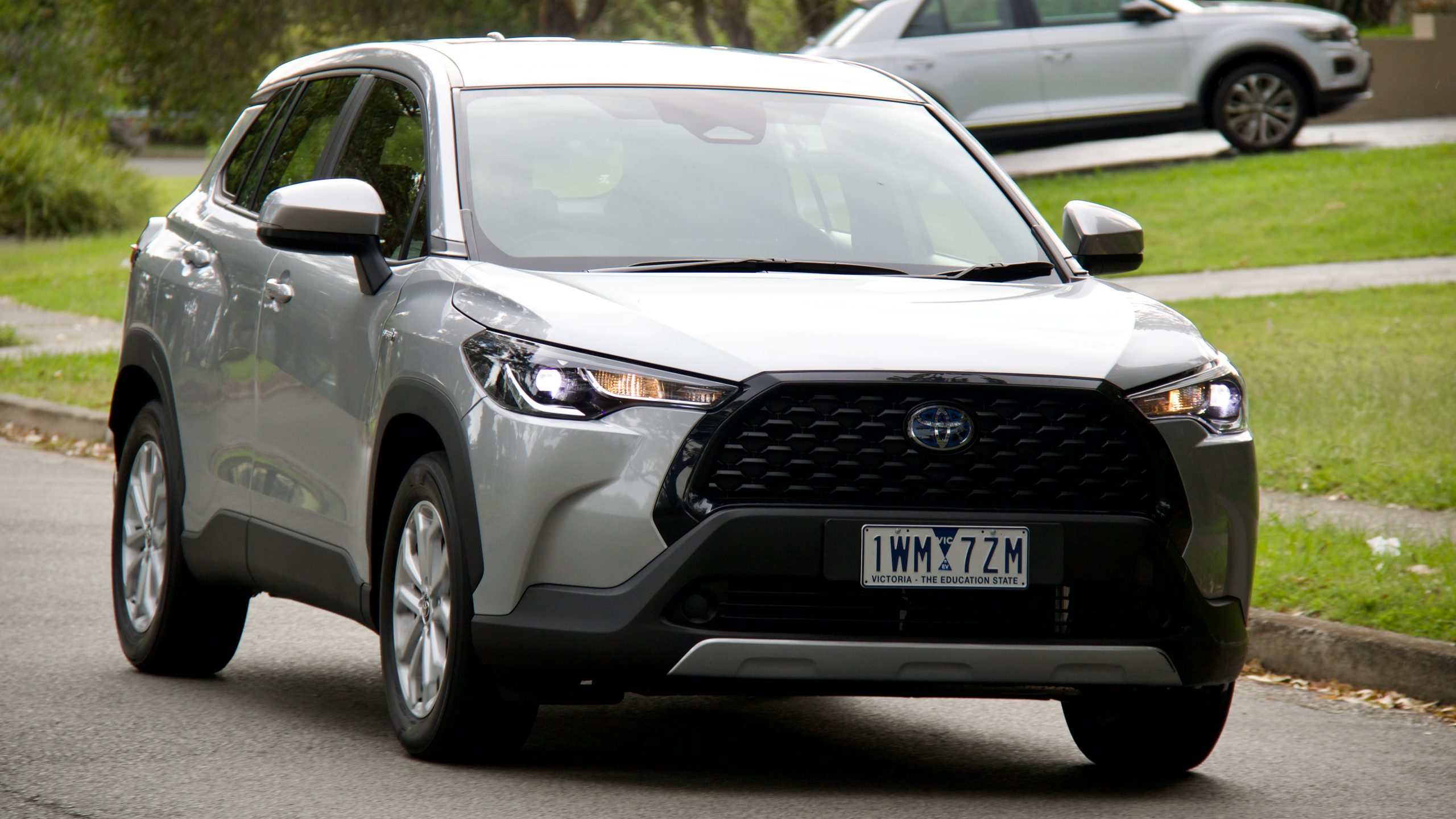
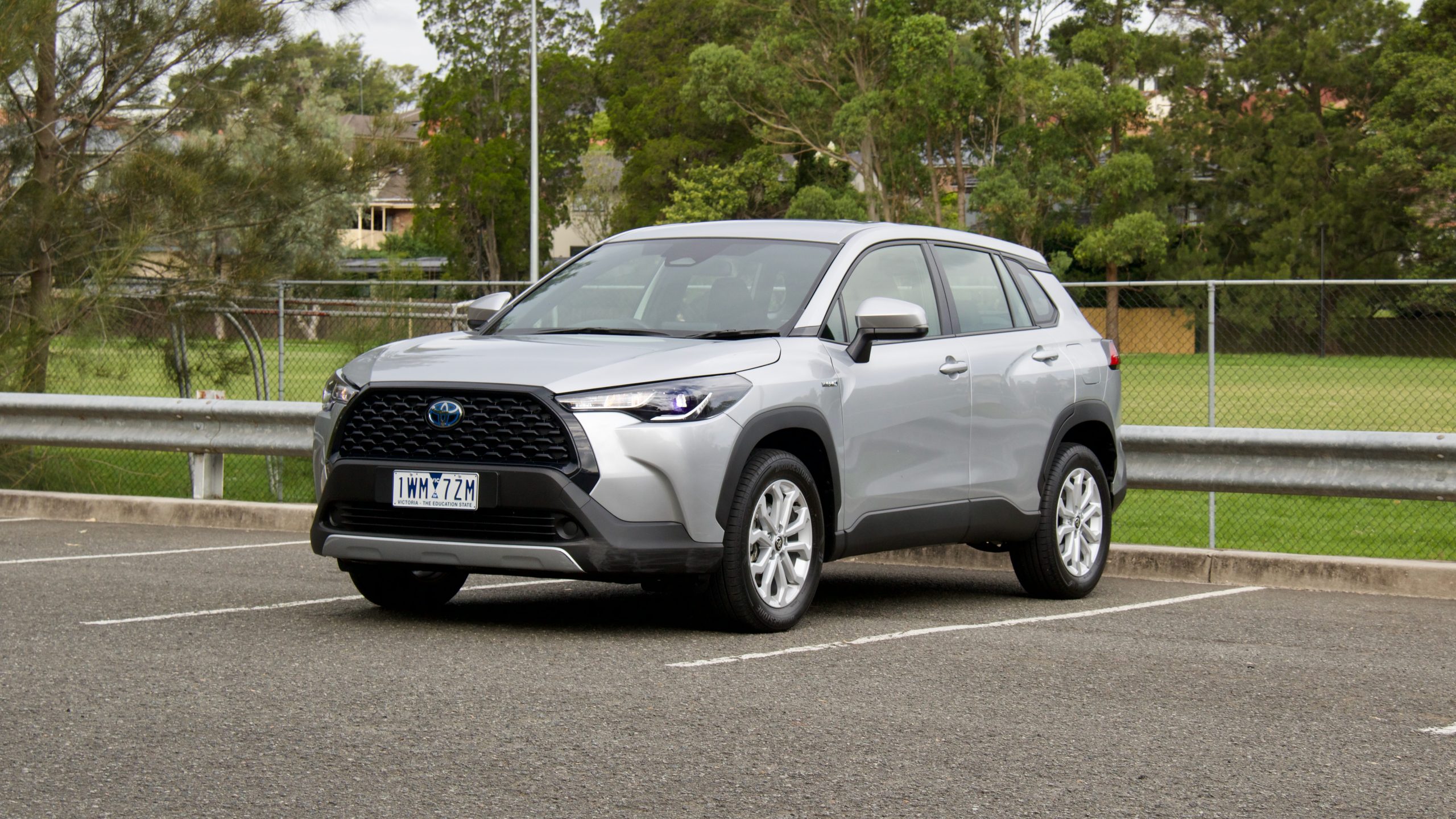
That being said, it’s not without flaws. The price is high, especially given the equipment it is missing and the ride/handling balance, while good, isn’t quite Corolla or Yaris Cross good. The tiny fuel tank is also a frustrating oversight. The interior is also a bit of a let down in terms of material quality – leaving it functional but feeling a bit ‘rental car’ spec. But overall, as the lowest cost entry into the hybrid Corolla Cross range, we think the 2023 Toyota Corolla Cross GX Hybrid will be popular and it is definitely worth putting on your comparison list if you’re in the market for a small SUV.
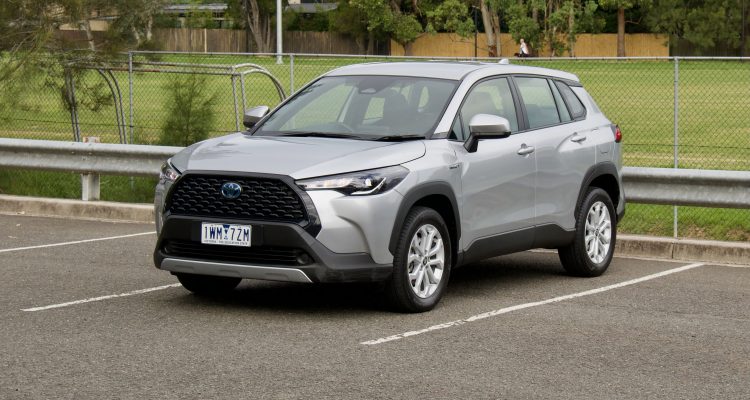
Leave a Reply